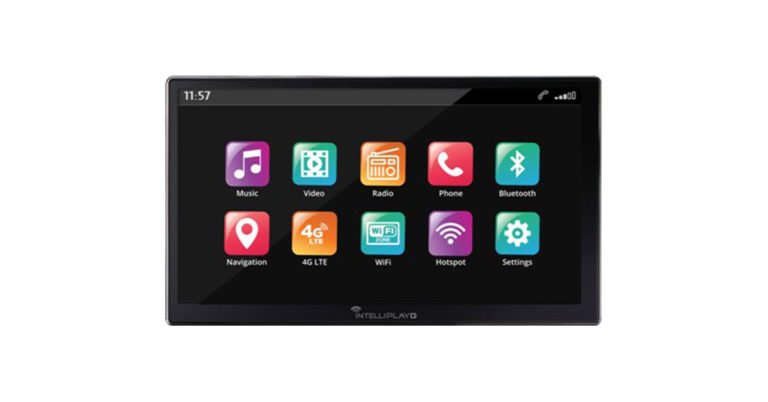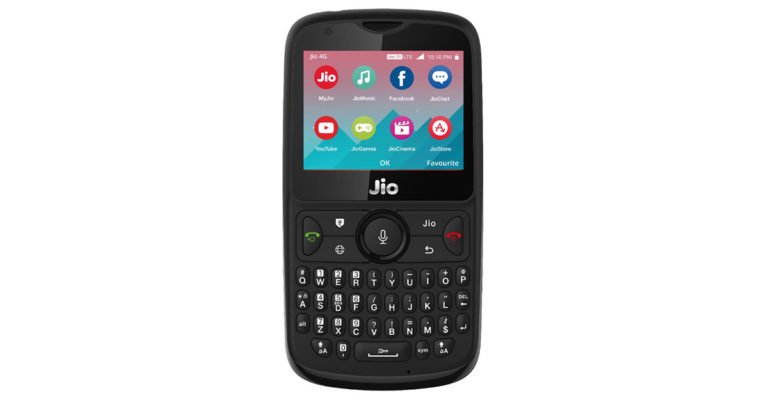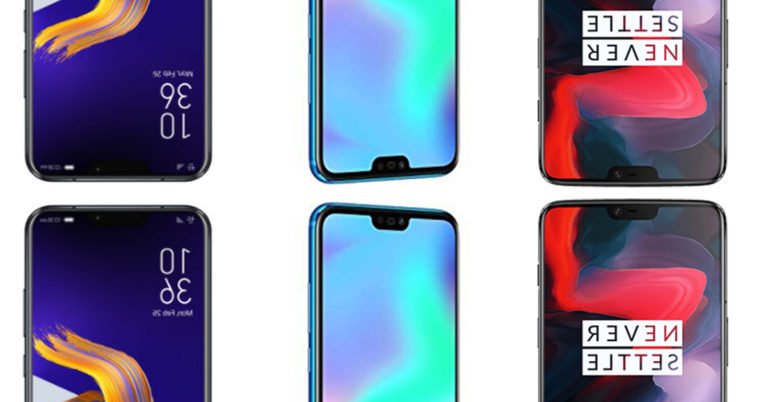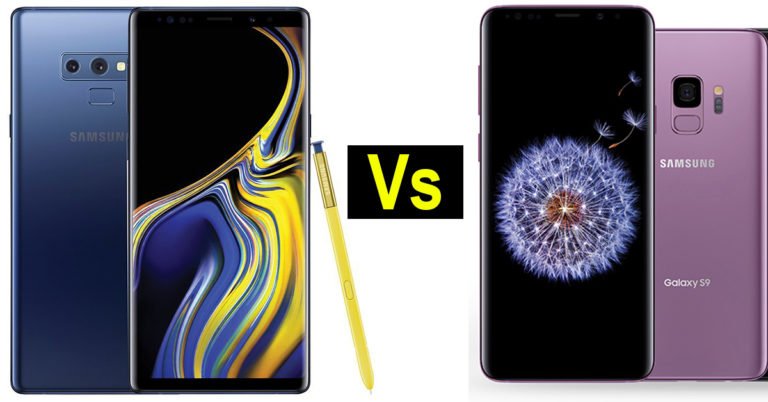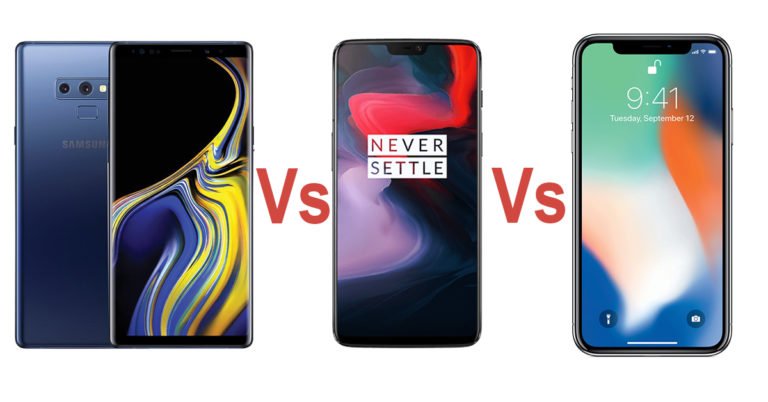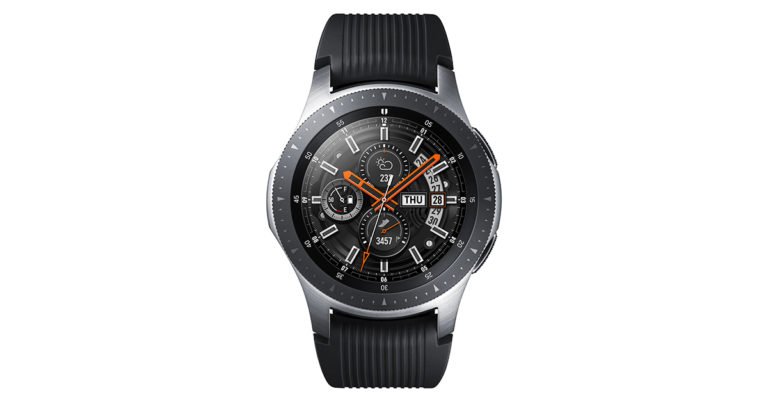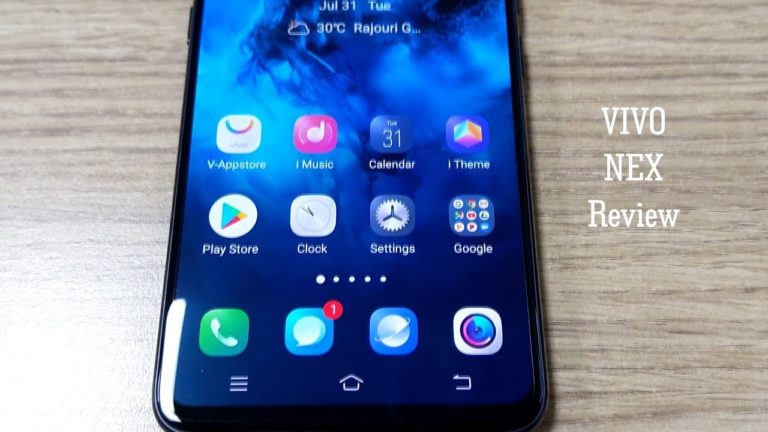- Three iPhones: What tops the list is obviously the three new iPhones that Apple is all set to launch. If reports are to be believed, then Apple will be launching a 5.8-inch iPhone, a 6.5-inch ‘Plus’ model, and a 6.1-inch iPhone. All three are expected to come with wireless charging and come with 18-watt power adapter. The smartphones will be powered by the all new A12 Bionic processor and are expected to sport improved cameras. While the 5.8-inch and 6.5-inch versions may come with OLED screens, the 6.1-inch variant is expected to feature an LCD screen. It has also been reported that the OLED models will come with 512GB storage option.
- New Apple Watch: Since it showcased the first ever Apple Watch in 2014, Apple has launched a new version in its annual September event – with 2015 being the only exceptional year. And this time, we fully to see the Apple Watch Series 4 at the event. The new Apple Watch is expected to be available in two sizes and both will come with a new S4 system-on-chip. The Apple Watch Series 4 will come with thinner bezels and hence – a bigger display. The new Apple Watch is also expected to come with improved health sensors and will be available in both LTE and Wi-Fi models.
- Redesigned iPad Pros: We fully expected to see the revamped version of iPad Pro in WWDC 2018, but Apple chose not to launch it in spring. Now, it is only natural to see them at the September 12 event. The revamped iPads are expected to come in two sizes — 11 inches and 12.9 inches –and sport smaller bezels. They would also not have a Touch ID and will feature the Face ID instead.
- Second generation Airpods: The second generation AirPods by Apple may be dubbed AirPods 2 and if rumours in various reports are true, they come with Siri-integration and are water resistant. A longer battery life, better noise cancellation and an enhanced sound quality are expected from the AirPods 2. Although they are expected to be unveiled at this year’s event, some reports also point towards the possibility of them being launched in 2019.
Apple September 12 iPhone launch event: What all to expect
Apple fans have a reason to rejoice! The Cupertino based technology giant has finally sent out invites for its annual event during which it launches iPhones. The 2018 version of iPhones will be unveiled to the world on September 12 in the event that will be held at Steve Jobs theatre. The company has given out no word on what it plans to launch, and all analysts have got down to decoding that what the Tim Cook led besides the iPhones could be launched by Apple on September 12.
We have made a list of everything that you can expect at Apple’s September 12 event:
Yu Ace smartphone with 4,000mAh battery launched in India: Price, specifications and more
Micromax’s subsidiary Yu Televentures has launched its Yu Ace smartphone in India. The entry level smartphone has impressive specifications for its price range including a massive 4,000mAh battery, a display aspect ratio of 18:9, face unlock and is powered by Android 8.1 Oreo.
The company has also said that Yu Ace will be getting an upgrade to Android Pie. With Yu Ace, Micromax has launched a smartphone after almost a year. The last phone launched by the company was Yu Yureka 2 in September 2017.
Specifications
Micromax Yu Ace smartphone features a 5.45-inch HD+ (720×1440 pixels) display with an aspect ratio of 18:9. The smartphone has support for dual-SIM cards and runs Android 8.1 Oreo skinned with the company’s own Steroid Launcher. Powered by a quad-core MediaTek MT6739 processor clubbed with 2GB RAM, the Yu Ace smartphone comes with 16GB internal storage.
The highlight among the specifications is the smartphone’s 4,000mAh battery. To our surprise, Yu Ace comes with a removable battery — something that is no longer common.
For imaging duties, the Yu Ace mobile comes with a 13MP rear camera clubbed with flash. For selfies and video calls, there is a 5MP front facing snapper. The smartphone has a fingerprint sensor on board and the company has also touted its Face Unlock feature.
Price and availability
The Yu Ace smartphone is priced at Rs 5,999 and it is can be bought from a Flipkart flash sale slated for September 6. Post that, the next flash sale will be held on September 13. The Yu Ace smartphone will be available in three colour variants — Charcoal Grey, Elektric Blue, and Rose Gold. Another storage variant of the smartphone — featuring 3GB RAM and 32GB onboard storage — will be rolled out at the end of next month. However, its pricing details remain unknown as of now.
For the latest gadget and tech news, and gadget reviews, follow us on Twitter, Facebook, Instagram and YouTube
IFA 2018: What to expect from Samsung, Sony, Motorola and others
Keeping CES aside, IFA is one of the biggest annual tech shows in the world. And like every year, a host of technology companies are on their way to Berlin to showcase their latest gadgets. Before the event kicks off on August 31, we decided to list down everything that you can expect from IFA 2018:
Samsung: The South Korean technology giant will reportedly be showcasing an 8K QLED TV at IFA 2018. There are also reports that the Bixby Speaker that the company announced at Samsung Galaxy Note 9 launch will also be there for a closer look at the show. It is also expected to unveil its updated wireless devices at IFA 2018.
Sony: Sony’s plans for IFA 2018 involve bringing out its updated XZ3 smartphone. An image of the smartphone was recently leaked online and it looks nearly the same as Sony Xperia XZ2 Premium. So, an upgrade in specifications of the smartphone is expected. The company is also expected to showcase its upgraded music players from its Walkman range at IFA 2018.
Blackberry: According to several media reports, BlackBerry Key2 LE – a cheaper version of BlackBerry Key2 – will be unveiled at IFA 2018. The new model of the smartphone is expected to be powered by Qualcomm Snapdragon 636 processor coupled with 4GB RAM and will house a 3,000mAh battery. In other words, its specifications are not as powerful as the BlackBerry Key2.
Huawei: Huawei is set to challenge its own P20 Pro smartphone by showcasing its Mate 20 lineup at IFA 2018. The Mate 20 lineup from Huawei also includes its Mate 20 Pro smartphone. While Huawei’s P series focuses on cameras and entertainment, the Mate series focuses on battery life and productivity. So we can say that the upcoming Huawei Mate 20 Pro is meant to be a ‘business phone’.
HTC: HTC has released a teaser – something U – for IFA 2018 and various leaks suggest that the company will be launching the HTC U12 Life at the tech expo. The smartphone is expected to come with a 6-inch display with 18:9 aspect ratio, a Qualcomm Snapdragon 636 processor clubbed with 4GB RAM and 64GB of inbuilt storage. It will also come with a dual rear camera setup.
Motorola: Motorola is totally expected to unveil its iPhone X inspired P30 smartphone at IFA 2018. The smartphone was announced in China earlier this month, and IFA 2018 will be the perfect platform to showcase it globally.
Lenovo: Speaking about Lenovo, the company is expected to showcase its updated laptops. There is also a possibility of seeing a new ThinkPad at the IFA 2018.
Nokia: If rumours are correct, then HMD Global will be showcasing a new high-end smartphone powered by Snapdragon 845 — dubbed Nokia 9. It goes without saying that the smartphone is expected to come with other high end specifications too.
LG: Reports suggest that LG will be launching its new flagship smartphone — V40 ThinQ — which is said to sport five cameras in total. The company is also expected to showcase an exoskeleton robot that it has been teasing off late.
Dell: No guesses for this one. The company will be updating the specifications of its laptop and PC line-up for IFA 2018. Other innovations are also expected, but currently there’s no official word about it.
For the latest gadget and tech news, and gadget reviews, follow us on Twitter, Facebook, Instagram and YouTube
Instagram rolls out new tools to curb spamming on its platform
Facebook-owned photo-sharing app Instagram has now come up with new features that are expected to bring more transparency to the platform. All the new features that have been launched indicate that Instagram is seriously trying to reduce the number of fake accounts and spamming on its platform. This is bound to make the app more user friendly for people. Here are the new features to look out for:
- About This Account: The name explains what the feature does, isn’t it? With this feature, whenever you see an advertisement on Instagram, you’ll be able to find out more about the account. General information about the account like its location, username changes in the past year among other details will be visible to the users, bringing in more transparency. Users would know that the accounts they interact with are exactly who they say they are. This would also stop any fake accounts from spreading misinformation.
- Support for third-party authentication apps: Soon, Instagram will enable its user to log into their Instagram accounts using third-party authentication apps. In order to do this, just click on the ‘Menu’ icon on your profile and then go to ‘Settings’. After this, scroll down and select ‘Two factor authentication’ and then click on ‘Authentication App’. Instagram will then send a code to the authentication app you have installed. All you have then have to do is retrieve the code from the app and enter it on Instagram and two factor authentication will be enabled on your account. This feature has started rolling out and will be available globally in a few weeks.
- Increased access to verification: Till now, the method of getting your Instagram account verified was not clear. But now, the app is changing that. Users can now initiate the process of getting a verified account via a form available on the platform. It can be requested for by visiting ‘Settings’ on your profile and choosing ‘Request Verification.’ Then, the user will be required to share their username, their full name, and their business/legal identification. However, don’t get your hopes too high because, according to Instagram, requesting for verification doesn’t guarantee that your account will be verified.
UE Wonderboom Freestyle Bluetooth speaker review: Louder than you can imagine
Ultimate Ears or UE is a sub brand of Logitech and they have been making some great audio accessories for mobile phones. The latest to come to the Indian soil is the UE Wonderboom Freestyle Bluetooth speaker that comes in a variety of colours. We call it the grenade design as it reminds us of a military grenade, especially when you look at the Avacado colour of this speakers.
So let’s start by talking about its design and built. The UE Wonderboom Freestyle Bluetooth speaker is a rugged BT speaker that can be dropped from a height of up to 5 feet and nothing will happen to it. We tried it couple of times and really it didn’t wither at all. Over that, this speaker has IPX7 rating, which means it can be submerged in water up to 1 meter for 30 minutes and it will still be able to play your favourite tunes after the dip. We tried that too and it worked as it worked before, just wipe the water off and play the tunes as is. The power and BT buttons are located on the top along with the play and skip button, which is basically the logo of the device. The front features the volume up and down buttons which you cannot miss because of their exceptionally large size. The rear bottom part hides the charging port. Mesh cloth and rubber is what this device is made up of. It also comes with a hook loop in case you want to hang it somewhere around the house. Also, you can pair it with one more UE Wonderboom speaker to get that extra sound when throwing the party or having friends over on game night.
Setting it up was a no brainer and we were up and running in under a minute. Just turn on your mobiles Bluetooth, press the power button followed by the BT button on the speaker and pair the devices. Now for the fun part—its resonance. It is mind bogglingly loud. It is so loud that it can wake the neighbours up. We did not expect this much sound from a small device like this. The bass is thumpy and the highs are clear, lows not so much. The battery backup is good too, we got about 9.5 hours of playback from this device. All in all, a great buy for Rs 6,995 and oh yes, the wireless range for UE Wonderboom Freestyle Bluetooth speaker is 100 feet and it works through walls as well.
Pros: Good base, waterproof, Shock resistant
Cons: Low notes could have been better
For the latest gadget and tech news, and gadget reviews, follow us on Twitter, Facebook, Instagram and YouTube
The power and BT buttons are located on the top along with the play and skip button, which is basically the logo of the device. The front features the volume up and down buttons which you cannot miss because of their exceptionally large size. The rear bottom part hides the charging port. Mesh cloth and rubber is what this device is made up of. It also comes with a hook loop in case you want to hang it somewhere around the house. Also, you can pair it with one more UE Wonderboom speaker to get that extra sound when throwing the party or having friends over on game night.
Setting it up was a no brainer and we were up and running in under a minute. Just turn on your mobiles Bluetooth, press the power button followed by the BT button on the speaker and pair the devices. Now for the fun part—its resonance. It is mind bogglingly loud. It is so loud that it can wake the neighbours up. We did not expect this much sound from a small device like this. The bass is thumpy and the highs are clear, lows not so much. The battery backup is good too, we got about 9.5 hours of playback from this device. All in all, a great buy for Rs 6,995 and oh yes, the wireless range for UE Wonderboom Freestyle Bluetooth speaker is 100 feet and it works through walls as well.
Pros: Good base, waterproof, Shock resistant
Cons: Low notes could have been better
For the latest gadget and tech news, and gadget reviews, follow us on Twitter, Facebook, Instagram and YouTube
 The power and BT buttons are located on the top along with the play and skip button, which is basically the logo of the device. The front features the volume up and down buttons which you cannot miss because of their exceptionally large size. The rear bottom part hides the charging port. Mesh cloth and rubber is what this device is made up of. It also comes with a hook loop in case you want to hang it somewhere around the house. Also, you can pair it with one more UE Wonderboom speaker to get that extra sound when throwing the party or having friends over on game night.
Setting it up was a no brainer and we were up and running in under a minute. Just turn on your mobiles Bluetooth, press the power button followed by the BT button on the speaker and pair the devices. Now for the fun part—its resonance. It is mind bogglingly loud. It is so loud that it can wake the neighbours up. We did not expect this much sound from a small device like this. The bass is thumpy and the highs are clear, lows not so much. The battery backup is good too, we got about 9.5 hours of playback from this device. All in all, a great buy for Rs 6,995 and oh yes, the wireless range for UE Wonderboom Freestyle Bluetooth speaker is 100 feet and it works through walls as well.
Pros: Good base, waterproof, Shock resistant
Cons: Low notes could have been better
For the latest gadget and tech news, and gadget reviews, follow us on Twitter, Facebook, Instagram and YouTube
The power and BT buttons are located on the top along with the play and skip button, which is basically the logo of the device. The front features the volume up and down buttons which you cannot miss because of their exceptionally large size. The rear bottom part hides the charging port. Mesh cloth and rubber is what this device is made up of. It also comes with a hook loop in case you want to hang it somewhere around the house. Also, you can pair it with one more UE Wonderboom speaker to get that extra sound when throwing the party or having friends over on game night.
Setting it up was a no brainer and we were up and running in under a minute. Just turn on your mobiles Bluetooth, press the power button followed by the BT button on the speaker and pair the devices. Now for the fun part—its resonance. It is mind bogglingly loud. It is so loud that it can wake the neighbours up. We did not expect this much sound from a small device like this. The bass is thumpy and the highs are clear, lows not so much. The battery backup is good too, we got about 9.5 hours of playback from this device. All in all, a great buy for Rs 6,995 and oh yes, the wireless range for UE Wonderboom Freestyle Bluetooth speaker is 100 feet and it works through walls as well.
Pros: Good base, waterproof, Shock resistant
Cons: Low notes could have been better
For the latest gadget and tech news, and gadget reviews, follow us on Twitter, Facebook, Instagram and YouTube Samsung Galaxy J2 Core ‘Android Go’ Edition launched in India: Price, specifications and more
Samsung’s first Android Go smartphone – Galaxy J2 Core has been launched in India. The announcement about the smartphone was made at Google for India 2018 – Google’s annual event – in New Delhi. It is the first time that Samsung has partnered with Google to unveil an Android Go device. Samsung Galaxy J2 Core was announced in India last week and it runs Android 8.1 Oreo (Go Edition). It is also touted to enhance selfies with a dedicated Beauty mode.
Price and availability
Samsung Galaxy J2 Core is priced at Rs 6,190 and competes with the likes of Micromax Bharat Go and Lava Z61 – both of which are Android Go smartphones too. The smartphone is available in Gold, Blue and Black colour variants and can be bought from retail stores or Samsung’s eShop in the country.
Specifications
Samsung’s first Android Go smartphone features a 5-inch QHD TFT display and is powered by a quad-core Exynos 7570 processor clubbed with 1GB RAM. The smartphone comes with 8GB of internal storage and can hold a microSD card of up to 256GB.
For imaging duties, there is an 8MP primary camera with an f/2.2 aperture and an LED flash. There is a 5MP front facing snapper for selfies and video calls.
Samsung Galaxy J2 Core houses a 2,600mAh battery that is claimed to offer an all-day experience on a single charge. The smartphone comes with 4G VoLTE, Wi-Fi, Bluetooth v4.2, GPS, Micro-USB, and a 3.5mm headphone jack as connectivity options. Note that the smartphone does not come with a fingerprint sensor or a face unlock feature.
Speaking about the company’s newly launched smartphone, Sumit Walia, Director of Mobile business at Samsung India said, “Galaxy J2 Core reiterates Samsung’s commitment towards meaningful innovations that delight our customers. We are pleased to integrate industry-first smart memory management solutions that allow apps or content on the memory card. We are also pleased to partner with Google in bringing the latest Android experience for entry-level smartphones with Oreo (Go Edition) on Galaxy J2 Core.”
For the latest gadget and tech news, and gadget reviews, follow us on Twitter, Facebook, Instagram and YouTube
Google for India 2018: All you need to know
Technology giant Google’s fourth edition of ‘Google for India’ took place at an event in New Delhi today. As expected, there were a number of announcements that were made at Google’s annual event. India has the second largest population of internet users, and hence is a very important market for Google. Here are the key announcements that Google spoke about at its event today:
- Google Tez gets re-branded at Google Pay: The technology giant’s payment app Google Tez will now be rebranded to Google Pay. Google is eyeing to get over 15,000 retail stores in India and 2,000 online merchants on its Google Pay app by Diwali 2018. It also talked about its plans to bring rich interactions to its payment app. Businesses and merchants can also start using Google Pay to pay for Google Ads. Google Pay is also collaborating with Federal Banks, HDFC Bank, ICICI Bank among others for loans. It is worth noticing that the app will only act as an intermediary and that the customer will only be able to get these pre-approved loans via banks. This feature will start appearing on Google Pay app in the next few weeks.
- Google Station to reach over 12,000 villages: Google announced today that it has joined hands with Andhra Pradesh State FiberNet Ltd (APSFNL) to bring Google Station to over 12,000 villages, using the Station Wi-Fi model. This move by the technology giant will help in providing internet access to around 10 million people in the country. Prior to this, the company had partnered with RailTel and provided Wi-Fi access across 400 Indian railway stations.
- Google will promote Indian language content online with Project Navlekha: Another announcement that Google made today was that it is working with Indian language publishers and aims to bring online content that is more relevant to audience in the country. As of now, the amount of online content that is available in Indian languages is only 1% of that available in English. With its new Project Navlekha, Google aims to enable publishers working in Indian regional languages to bring their content online. Navlekha is a Sanskrit word that means ‘a new way to write’. According to Google, just with help of a simple application, publishers will be able to create web pages from scanned copies of pages. Google claims that among 135,000 of print publishers in India, 90% do not have a website. With Project Navlekha, it eyes to change that with an AI tool that will render any PDF file with Indian language content into editable text.
- Users to get the option of listening to web pages: At its Google for India conference, Google has also announced a number of upcoming features for Google Go and Android (Go edition) OS. The key announcement was that Google’s AI based technology will enable users to “listen to webpages.” Users will now have two brand new features that they can access — bilingual news feed and audio playback. Basically, Google News Feed is set to become bilingual and will support both English and Hindi. In a few months, this feature will arrive on Google Go as well. And with the audio playback feature, users will be able to listen to webpages. The new feature by Google uses natural language processing and speech synthesis AI and can support 28 languages. Furthermore, users will be able to listen to web pages even if they are using a 2G connection.
Realme 2 with notch display and 4,230 mAh battery launched in India: Specs, price and more
Realme is the sub-brand of Oppo mobiles that just got independent of the parent company and apparently is doing really well in India. Today at an event in New Delhi the company has launched Realme 2, the first smartphone in India in the sub Rs 10K category that sports a notch display. Available in two variations and 3 colours (Red, Black and Blue) the smartphone does look similar to the previous edition with its own distinct features.
Realme 2 technical specifications
The Realme 2 is a smartphone that screams for attention. It has been built on the same crystal design format as previously seen on other Oppo smartphones. The Realme 2 features a 6.2-inch HD+ (1,520×720 pixels) ICP touch screen with 19:9 aspect ratio. Yes, it does have a notch that has most of the front sensors and an 8MP (f/2.2 aperture) selfie camera. At the rear users will get a dual camera setup (horizontally located) featuring a 13MP primary sensor with f/2.2 aperture and 2MP secondary camera with f/2.4 aperture. A fingerprint reader at the back has also been thrown in the mix. Under the hood, the Realme 2 sports a Qualcomm Snapdragon 450 chipset. The mobile is available in two versions. One with 3GB RAM and 32GB storage and other with 4GB RAM and 64GB storage. The memory is expandable by up to 256GB on both the variants. For graphical duties this smartphone has Adreno 506 GPU on it. As for the battery the Realme 2 houses a 4,230 mAh battery and come with 10W charger in the box. The phone is 8.2mm thick and weighs 168grams. To sum up the connectivity features the Realme 2 has Bluetooth v4.2, 4G VOLTE, GPS/A-GPS, micro USB port and 3.5mm audio jack.
Realme 2 price
The 3GB RAM and 32GB storage variant is priced at Rs 8,990 and the 4GB RAM and 64GB storage version is priced at Rs 10,990. The phone will be available exclusively on Flipkart and will start sales on September 4. There is a Rs 750 discount also running when the phone is bought using HDFC bank cards. Also, up to 120 GB data can be drawn by Reliance JIO users when they buy this smartphone, along with Rs 4,200 benefits.
For the latest gadget and tech news, and gadget reviews, follow us on Twitter, Facebook, Instagram and YouTube.
Under the hood, the Realme 2 sports a Qualcomm Snapdragon 450 chipset. The mobile is available in two versions. One with 3GB RAM and 32GB storage and other with 4GB RAM and 64GB storage. The memory is expandable by up to 256GB on both the variants. For graphical duties this smartphone has Adreno 506 GPU on it. As for the battery the Realme 2 houses a 4,230 mAh battery and come with 10W charger in the box. The phone is 8.2mm thick and weighs 168grams. To sum up the connectivity features the Realme 2 has Bluetooth v4.2, 4G VOLTE, GPS/A-GPS, micro USB port and 3.5mm audio jack.
Realme 2 price
The 3GB RAM and 32GB storage variant is priced at Rs 8,990 and the 4GB RAM and 64GB storage version is priced at Rs 10,990. The phone will be available exclusively on Flipkart and will start sales on September 4. There is a Rs 750 discount also running when the phone is bought using HDFC bank cards. Also, up to 120 GB data can be drawn by Reliance JIO users when they buy this smartphone, along with Rs 4,200 benefits.
For the latest gadget and tech news, and gadget reviews, follow us on Twitter, Facebook, Instagram and YouTube.
 Under the hood, the Realme 2 sports a Qualcomm Snapdragon 450 chipset. The mobile is available in two versions. One with 3GB RAM and 32GB storage and other with 4GB RAM and 64GB storage. The memory is expandable by up to 256GB on both the variants. For graphical duties this smartphone has Adreno 506 GPU on it. As for the battery the Realme 2 houses a 4,230 mAh battery and come with 10W charger in the box. The phone is 8.2mm thick and weighs 168grams. To sum up the connectivity features the Realme 2 has Bluetooth v4.2, 4G VOLTE, GPS/A-GPS, micro USB port and 3.5mm audio jack.
Realme 2 price
The 3GB RAM and 32GB storage variant is priced at Rs 8,990 and the 4GB RAM and 64GB storage version is priced at Rs 10,990. The phone will be available exclusively on Flipkart and will start sales on September 4. There is a Rs 750 discount also running when the phone is bought using HDFC bank cards. Also, up to 120 GB data can be drawn by Reliance JIO users when they buy this smartphone, along with Rs 4,200 benefits.
For the latest gadget and tech news, and gadget reviews, follow us on Twitter, Facebook, Instagram and YouTube.
Under the hood, the Realme 2 sports a Qualcomm Snapdragon 450 chipset. The mobile is available in two versions. One with 3GB RAM and 32GB storage and other with 4GB RAM and 64GB storage. The memory is expandable by up to 256GB on both the variants. For graphical duties this smartphone has Adreno 506 GPU on it. As for the battery the Realme 2 houses a 4,230 mAh battery and come with 10W charger in the box. The phone is 8.2mm thick and weighs 168grams. To sum up the connectivity features the Realme 2 has Bluetooth v4.2, 4G VOLTE, GPS/A-GPS, micro USB port and 3.5mm audio jack.
Realme 2 price
The 3GB RAM and 32GB storage variant is priced at Rs 8,990 and the 4GB RAM and 64GB storage version is priced at Rs 10,990. The phone will be available exclusively on Flipkart and will start sales on September 4. There is a Rs 750 discount also running when the phone is bought using HDFC bank cards. Also, up to 120 GB data can be drawn by Reliance JIO users when they buy this smartphone, along with Rs 4,200 benefits.
For the latest gadget and tech news, and gadget reviews, follow us on Twitter, Facebook, Instagram and YouTube. Flying drones to be legalized in India starting December
Ministry of Civil Aviation today finalised a new drone policy according to which flying Remotely Piloted Aircraft System (RPAS), or in simpler words – drones – will be legal across India starting December 1, 2018.
Currently, prior permission from government authorities is required for flying drones and it is also considered illegal for flying them for civilian purposes.
Those wanting to use drones will be required to do a one-time registration of the drones, as well as their pilots and owners.
After this, a request for permission to fly the drone has to be made on a mobile app. This has to be done each time the user wishes to fly the drone. The request will be permitted or denied via an automated process. If denied, the drone will not be able to take off as it’ll require a digital permit.
Even if a drone gets the permission to fly, it can only do so during the day time. The Ministry of Civil Aviation has also said that the maximum altitude at which a drone can fly is 400-ft.
There are also ‘No Drone Zones’ that have been defined by the Ministry of Civil Aviation. Areas coming under ‘No Drone Zones’ are areas around airports, near international border, Vijay Chowk in Delhi, State Secretariat Complex in state capitals, strategic locations, vital military installations etc. The regulations announced today are titled Regulations 1.0 because they are the first set of rules given by the government regarding this subject. The Ministry defined drones as a technology platform that has a number of applications including photography, agriculture, insurance and even infrastructure asset management. Speaking about the regulations issued, Minister of Civil Aviation, Suresh Prabhu said, “Today we start an exciting new chapter in India’s aviation history by allowing commercial use of drones. I am sure that many new and exciting applications will emerge that will propel India’s economy forward. Our progressive regulations will encourage a vast Made in India drone industry.” For the latest gadget and tech news, and gadget reviews, follow us on Twitter, Facebook, Instagram and YouTubePress Release on Drones: pic.twitter.com/6ZlPeLJpxB
— MoCA_GoI (@MoCA_GoI) August 27, 2018
Samsung Galaxy A8 Star launched in India: Specifications, price and more
Just two days after Samsung launched its flagship phablet – Note 9 – in India, it has taken wraps off its Galaxy A8 Star mobile phone too. The smartphone was launched in China in June this year where it was dubbed as Samsung Galaxy A9 Star. In India, it is priced at Rs 34,900 and competes directly with OnePlus 6 and Asus Zenfone 5Z.
Samsung Galaxy A8 Specifications
Samsung Galaxy A8 Star features a 6.3-inch Full HD+ Super AMOLED Infinity display which comes with an aspect ratio of 18.5:9. The smartphone comes with 2.5D and 3D curved glass body coupled with metallic frames. Powered by Qualcomm Snapdragon 660 processor clubbed with 6GB RAM, the smartphone comes with 64GB onboard storage and can hold a microSD card of up to 400GB.
For imaging duties, Samsung Galaxy A8 Star comes with what it calls as ‘Dual Intellicam’ on its back panel with 16MP +24MP sensors. For selfies and video calls, there is a 24MP front facing snapper.
According to the company, the rear cameras of this smartphone can detect the lighting conditions and then accordingly choose the perfect lens to click photos. It also has a Live Focus feature – which is the South Korean technology giant’s take on the Bokeh effect.
Samsung Galaxy A8 Star houses a 3,700mAh battery and comes with a pre-installed Secure Folder functionality. This feature can be used to protect important files and sensitive content in the smartphone.
The smartphone also comes with Samsung Pay, face recognition technology and the company’s digital assistant – Bixby.
Price and availability
Samsung Galaxy A8 Star is priced at Rs 34,900 and will be available in two colours — Midnight Black and Ivory White. It will be available on Amazon India’s website starting August 27. It will hit the retail stores by September 5.
For the latest gadget and tech news, and gadget reviews, follow us on Twitter, Facebook, Instagram and YouTube
Tim Cook completes 7 years as Apple CEO: Seven innovations and products we have seen under his leadership
It was 7 years ago on this day that Tim Cook stepped into the role of the CEO at Apple. And a lot has changed at the Cupertino based technology giant since then. The company’s biggest achievement under his leadership came just a few days back when Apple was announced to the world’s first trillion dollar company. With Tim Cook as Apple’s CEO, even Apple Services business has shown a double digit growth. What lies behind this massive growth in business are the number of innovations that are happening at Apple and the new products the company is coming up with. And with Tim Cook as the leader, there are many on the list. Here, we list down 7 new Apple products and services we have seen under Tim Cook’s leadership:
In This Article
iPhone X
Apple iPhone X had to dominate our list. The tenth anniversary edition of the iPhone is the most expensive smartphone from Apple till date. And it has been a trendsetter in many ways. Although it wasn’t the first smartphone to sport the notch on its display, the design became a rage only after iPhone X was unveiled in September last year. So did the bezel-less edge to edge display that iPhone X sports. Apple replaced the fingerprint sensor in iPhone X with Face ID – which meant that a user could unlock his device by just placing his phone in front of his face. Furthermore, iPhone X can be charged wirelessly by using a standard called Qi. The phone has been the most futuristic smartphone by Apple yet. And ever since it has been launched we have seen a multiple smartphone manufacturers get inspired by its features.Apple Watch
We saw the first Apple Watch getting launched in 2014. And since then, we have seen a number editions of the smartwatch including Apple Watch Series 1, Apple Watch Series 2, Apple Watch Hermes, Apple Watch Nike+, and Apple Watch Series 3. While earlier editions of Apple Watch could only work if they were connected to an iPhone, the Apple Watch Series 3 is different. It can be used even when it is not connected to an iPhone and can be used to make phone calls.Apple AirPods
The next Apple product on our list is AirPods. If you are living under the rock and haven’t seen them yet, they wirelessly connect to your Apple devices so that you can listen to music, change songs and control volume. Furthermore, music gets paused on your iPhone the moment you remove them. Users can also access Siri via AirPods. They are compatible with iPhones powered by iOS 10.2 or higher, Apple Watch editions with WatchOS 3 and devices with macOS Sierra. It can also be connected to Android phones that come with Bluetooth v4.0 and can sync automatically with iCloud.Apple HomePod
Apple HomePod is a smart home speaker by the technology company which comes in White and Space Gray colour variants. Apple HomePod has the company’s digital assistant — Siri — on board and is powered by Apple A8 CPU. The HomePod by Apple connects with Apple Music and syncs all the playlists that are made by the user. It has the ability to take voice commands, answer queries and detect noise in its surroundings to tune its music output correspondingly.AirPower
AirPower is a really cool product that the technology giant unveiled in September last year along with iPhone X, iPhone 8 and iPhone 8 Plus. The AirPower is a wireless charging mat and it has the ability to charge iPhones, AirPods and Apple Watches — all at once.Apple Music
Apple Music is popular music and video streaming service by the Cupertino based technology giant. Launched in 2015, the service is available in over 100 countries worldwide. It enables users to choose music to stream on their device on demand or to listen to playlists that have already been curated. It also gives users access to Beats 1. The service saw immense popularity right after it was launched and saw 10 million people subscribe to it within six months of its launch. As of May 2018, Apple Music had 50 million paying subscribers.Apple Pay
As the name suggests, Apple Pay is a mobile payment service by Apple. With Apple Pay, users can make payments in person, on the web and on iOS apps. The payment service by Apple can run on iPhone, Apple Watch, iPad and Mac. Apple Pay can work with any merchant that accepts contactless payments and replaces credit card or debit card chip and PIN and magnetic stripe transactions. While using Apple Pay, Apple devices communicate wirelessly with point of sale systems using NFC antenna, and Apple’s Touch ID and Wallet.7 things you can do with your Samsung Galaxy Note 9’s S Pen
Whenever we think of the Samsung Galaxy Note series, the S Pen automatically pops up in our heads. The Note phablets and their S Pens are literally inseparable. And the S Pen has surely come a long way. What was earlier a plastic stylus that enabled users to perform certain functions; the latest S Pen has been upgraded by Samsung to come equipped with Bluetooth technology. And Samsung Galaxy Note 9’s S Pen can handle a number of functionalities. Besides doing everything that you could with the previous S Pen, here are the functions Samsung Galaxy Note 9’s S Pen can take care of:
In This Article
Launch the camera
You can be standing away from your Samsung Galaxy Note 9 and still launch the camera app of the smartphone. But you must have the S Pen in your hand to do this. Just hold on the Bluetooth button on the S Pen and Galaxy Note 9’s camera app will get launched.Click selfies
At the launch of the Samsung Galaxy Note 9, the company demonstrated various things that one can do with the S Pen. And a really cool functionality of the upgraded S Pen is that users can click selfies with it. It literally acts like a mini selfie stick that can function remotely. Once you have the camera app open, all you have to do is click on the Bluetooth button to click photos.Switch camera modes
If Samsung has enabled you to click images remotely, it has also made it easier to change camera modes. So suppose the selfie you are clicking looks too dark, you wouldn’t have to get up to change the camera mode to get that perfect shot. Just double tap on the Bluetooth button and the mode in the camera app will be changed. Isn’t that a cakewalk?Control apps like YouTube
Although we haven’t used it yet, we are expecting the experience of watching videos and listing to music on Samsung Galaxy Note 9 to be superb – just like it always is on Note devices. But this time, it won’t just be the excellent display that will make the experience so good. Users will be able to Play or Pause music and videos using the S Pen. This can be particularly useful if the smartphone is connected to a Bluetooth speaker.Give an entire presentation
Another very cool thing to do with Samsung Galaxy Note 9’s S Pen is give presentations. So no need to carry your laptop to every meeting you go to. Just take your Samsung Galaxy Note 9 along with you. Just tapping on the Bluetooth button will take you on the next slide or back to the previous one. You will, however, need to connect your phone to a projector.Integrate it with various apps
The South Korean technology giant is opening the SDK of Galaxy Note 9’s S Pen. This will enable app developers to integrate the functions of the S Pen with their apps. Although Samsung hasn’t spoken about it, this will completely change the way we use various apps. We can already think of endless possibilities of integrations of S Pen’s functionalities with various apps of all genres.Pop it back in the phone to recharge
Needless to say, if you buy a Samsung Galaxy Note 9, you’ll end up using the S Pen a lot. And even if goes out of charge, you just need to pop it back in the smartphone and keep it there for 40 seconds. Post that, it will again work for 30 minutes on standby or for around 200 clicks. [td_smart_list_end]Samsung Galaxy Note 9 launched in India: Price, specifications and more
If you have been counting days to get your hands on Samsung’s flagship Galaxy Note 9, your wait is finally over. The phone is getting launched in India two days prior to its global availability – which will begin on August 24. The key highlights of the smartphone include a bigger display and the upgraded S Pen that comes with Bluetooth support. The smartphone is also the first from Samsung to come with a 4,000mAh battery.
Specifications
Samsung Galaxy Note 9 features a 6.4-inch Super AMOLED Infinity display with Quad HD+ resolution. The screen of the smartphone has an aspect ratio of 18.5:9. While in a number of global markets, Samsung Galaxy Note 9 will be powered by Qualcomm Snapdragon 845 SoC, in India, it will be powered by Exynos 9810 processor. There are two storage variants of the device — 6GB RAM/128GB storage and 8GB RAM/512GB of storage. It can also hold a microSD of up to 512GB in case users want more storage.
Samsung Galaxy Note 9 houses a 4,000mAh battery and sports a dual rear camera setup with a 12MP wide angle autofocus sensor and a 12MP telephoto autofocus sensor. Both the sensors support optical image stabilization. There is also an 8MP autofocus sensor on the front panel that can be used for taking selfies and making video calls on this mobile. The Android 8.1 Oreo based smartphone sports an upgraded S Pen that supports Bluetooth Low Energy module. The new S Pen can be used as a remote control for presentations and can manage various apps like YouTube. It can also be used to switch between primary and secondary cameras and for clicking selfies. Furthermore, the S Pen starts getting charged automatically just by placing it inside the smartphone. It is claimed that with just 40 seconds of charging, S Pen can function for 30 minutes.
Samsung Galaxy Note 9 comes with Dex. With Dex on-board, users can get a desktop-like experience from their phone.
The smartphone is IP68-rated waterproof and comes with wireless charging. Galaxy Note 9 features AKG Harman speakers and support iris, face and fingerprint sensors. For connectivity options, there is dual-band Wi-Fi, Bluetooth v5.0, USB Type-C, a 3.5mm headphone jack, WiFi, Ant+, NFC, MST, and Gigabit LTE.
Price and availability
The 6GB RAM/128GB inbuilt storage version costs Rs 67,900 and the 8GB RAM/512GB variant is priced at Rs 84,900. The pre-booking of the device started on August 10, but now it has been closed. The smartphone will be available at Samsung Mobile Store, Amazon India website, Flipkart and Airtel online store. It will also be available on Samsung Shop and various offline retail stores.
For the latest gadget and tech news, and gadget reviews, follow us on Twitter, Facebook, Instagram and YouTube
The Android 8.1 Oreo based smartphone sports an upgraded S Pen that supports Bluetooth Low Energy module. The new S Pen can be used as a remote control for presentations and can manage various apps like YouTube. It can also be used to switch between primary and secondary cameras and for clicking selfies. Furthermore, the S Pen starts getting charged automatically just by placing it inside the smartphone. It is claimed that with just 40 seconds of charging, S Pen can function for 30 minutes.
Samsung Galaxy Note 9 comes with Dex. With Dex on-board, users can get a desktop-like experience from their phone.
The smartphone is IP68-rated waterproof and comes with wireless charging. Galaxy Note 9 features AKG Harman speakers and support iris, face and fingerprint sensors. For connectivity options, there is dual-band Wi-Fi, Bluetooth v5.0, USB Type-C, a 3.5mm headphone jack, WiFi, Ant+, NFC, MST, and Gigabit LTE.
Price and availability
The 6GB RAM/128GB inbuilt storage version costs Rs 67,900 and the 8GB RAM/512GB variant is priced at Rs 84,900. The pre-booking of the device started on August 10, but now it has been closed. The smartphone will be available at Samsung Mobile Store, Amazon India website, Flipkart and Airtel online store. It will also be available on Samsung Shop and various offline retail stores.
For the latest gadget and tech news, and gadget reviews, follow us on Twitter, Facebook, Instagram and YouTube
 The Android 8.1 Oreo based smartphone sports an upgraded S Pen that supports Bluetooth Low Energy module. The new S Pen can be used as a remote control for presentations and can manage various apps like YouTube. It can also be used to switch between primary and secondary cameras and for clicking selfies. Furthermore, the S Pen starts getting charged automatically just by placing it inside the smartphone. It is claimed that with just 40 seconds of charging, S Pen can function for 30 minutes.
Samsung Galaxy Note 9 comes with Dex. With Dex on-board, users can get a desktop-like experience from their phone.
The smartphone is IP68-rated waterproof and comes with wireless charging. Galaxy Note 9 features AKG Harman speakers and support iris, face and fingerprint sensors. For connectivity options, there is dual-band Wi-Fi, Bluetooth v5.0, USB Type-C, a 3.5mm headphone jack, WiFi, Ant+, NFC, MST, and Gigabit LTE.
Price and availability
The 6GB RAM/128GB inbuilt storage version costs Rs 67,900 and the 8GB RAM/512GB variant is priced at Rs 84,900. The pre-booking of the device started on August 10, but now it has been closed. The smartphone will be available at Samsung Mobile Store, Amazon India website, Flipkart and Airtel online store. It will also be available on Samsung Shop and various offline retail stores.
For the latest gadget and tech news, and gadget reviews, follow us on Twitter, Facebook, Instagram and YouTube
The Android 8.1 Oreo based smartphone sports an upgraded S Pen that supports Bluetooth Low Energy module. The new S Pen can be used as a remote control for presentations and can manage various apps like YouTube. It can also be used to switch between primary and secondary cameras and for clicking selfies. Furthermore, the S Pen starts getting charged automatically just by placing it inside the smartphone. It is claimed that with just 40 seconds of charging, S Pen can function for 30 minutes.
Samsung Galaxy Note 9 comes with Dex. With Dex on-board, users can get a desktop-like experience from their phone.
The smartphone is IP68-rated waterproof and comes with wireless charging. Galaxy Note 9 features AKG Harman speakers and support iris, face and fingerprint sensors. For connectivity options, there is dual-band Wi-Fi, Bluetooth v5.0, USB Type-C, a 3.5mm headphone jack, WiFi, Ant+, NFC, MST, and Gigabit LTE.
Price and availability
The 6GB RAM/128GB inbuilt storage version costs Rs 67,900 and the 8GB RAM/512GB variant is priced at Rs 84,900. The pre-booking of the device started on August 10, but now it has been closed. The smartphone will be available at Samsung Mobile Store, Amazon India website, Flipkart and Airtel online store. It will also be available on Samsung Shop and various offline retail stores.
For the latest gadget and tech news, and gadget reviews, follow us on Twitter, Facebook, Instagram and YouTube Nokia 6.1 Plus launched in India: Price, specifications and more
Almost every smartphone company this year rolled out a device that sports a notch on its display. HMD Global – that manufactures Nokia smartphones – couldn’t have lagged behind. So it came out with Nokia X6 – its own smartphone with a notch – in China in May this year. Today, HMD Global’s Nokia 6.1 Plus – the global version of Nokia X6 — has been launched in India. Till now, the only other market where Nokia 6.1 Plus has been launched is Hong Kong.
Among the key features of Nokia 6.1 Plus is that it is an Android One device. For those who don’t know, smartphones under Google’s Android One programme provide an optimized stock Android experience to the user and receive quick updates from the company.
Apart from this, all other specifications of the smartphone are the same as Nokia X6.
Specifications
The Android 8.1 Oreo based smartphone can support dual SIM cards and sports a 5.8-inch full-HD+ display that comes with an aspect ratio of 19:9. The screen of the Nokia 6.1 Plus is protected by 2.5D Gorilla Glass 3. Powered by Qualcomm Snapdragon 636 processor, the smartphone comes with 4GB of RAM and packs 64GB of internal storage. It can hold a microSD card of up to 400GB to provide more storage to the user.
Nokia 6.1 Plus houses a 3060mAh battery that supports Quick Charge 3.0 technology. For imaging duties, the device supports a dual rear camera setup with 16MP primary sensor and a 5MP monochrome sensor. It also has a 16MP front facing camera for selfies and video calls.
The smartphone’s camera app is also touted to come with AI features including depth of field, portrait lighting effects, optimized colour contrast, face recognition and HDR support. The Bothie feature that we saw in Nokia 8 and Nokia 8 Sirocco is also present. For those unaware, with Bothie feature, one can click a picture from the rear camera and selfie camera of the smartphone simultaneously.
The connectivity options of the smartphone include 4G VoLTE, Wi-Fi, Bluetooth 5.0, GPS, USB type C port and a 3.5mm jack
Price and availability
Priced at Rs 15999, Nokia 6.1 Plus competes directly with the likes of Xiaomi Redmi Note 5 Pro, Huawei P20 Lite and Vivo V9 Youth. It will be available exclusively on Flipkart and Nokia’s web store. Few Airtel offers are also there on the phone available on the website.
For the latest gadget and tech news, and gadget reviews, follow us on Twitter, Facebook, Instagram and YouTube.
ASUS Zenfone 5Z review: Powerful performance at an affordable price
OnePlus 6 isn’t the only budget flagship smartphone that is being spoken about this year. ASUS Zenfone 5Z – which comes at a lower price and offers more features has taken its fair share of limelight too. The smartphone is powered by Qualcomm Snapdragon 845 processor, comes with dual rear cameras and has a premium design with a glass body. But is it too good to be true, or is it as good as it sounds to be? Read the rest of our review to find out.
Design and Blueprint
We have always liked smartphones that come with a glass body. And Asus Zenfone 5Z is no exception. It is available in Meteor Silver and Midnight Blue colour variants and the one that we got for review was dressed in silver. While the front and back panels of the smartphone have 2.5D glass, the frame between them is made of aerospace-grade aluminium. With glass and metal coming together, there’s nothing about ASUS Zenfone 5Z that doesn’t look premium.
 With a 6.2-inch display dominating its front panel, the Asus Zenfone 5Z is tall, but it also narrower than other smartphones that we have used recently. This isn’t a downside at all because using it with one hand was far easier. The screen of the smartphone comes with 19:9 aspect ratio and has a notch at the top of the display. The notch houses the selfie camera, the earpiece and sensors. On flipping over, you will see a dual rear camera setup with an LED flash, a fingerprint scanner and ASUS branding.
The edges of the smartphone house the power and volume rocker buttons. A USB Type C port, a speaker grille, a 3.5mm jack, and a SIM tray are also there.
The screen that is protected by Corning Gorilla Glass 3. The display showcased bright and vivid colours that were accurate. We were impressed by the viewing angles and were also satisfied with sunlight readability – something we have always considered to be a big plus in any smartphone.
The smartphone comes with the ability to adjust the screen according to the current ambient lighting. However, there is an option of manually adjusting it too. The phone also has a smart screen feature that keeps the display on when you look at it. Another interesting feature is glove mode. This can be used to increase the sensitivity of the display in case you are using it with gloves on.
With a 6.2-inch display dominating its front panel, the Asus Zenfone 5Z is tall, but it also narrower than other smartphones that we have used recently. This isn’t a downside at all because using it with one hand was far easier. The screen of the smartphone comes with 19:9 aspect ratio and has a notch at the top of the display. The notch houses the selfie camera, the earpiece and sensors. On flipping over, you will see a dual rear camera setup with an LED flash, a fingerprint scanner and ASUS branding.
The edges of the smartphone house the power and volume rocker buttons. A USB Type C port, a speaker grille, a 3.5mm jack, and a SIM tray are also there.
The screen that is protected by Corning Gorilla Glass 3. The display showcased bright and vivid colours that were accurate. We were impressed by the viewing angles and were also satisfied with sunlight readability – something we have always considered to be a big plus in any smartphone.
The smartphone comes with the ability to adjust the screen according to the current ambient lighting. However, there is an option of manually adjusting it too. The phone also has a smart screen feature that keeps the display on when you look at it. Another interesting feature is glove mode. This can be used to increase the sensitivity of the display in case you are using it with gloves on.
 To sum it up, we would say that we were impressed with both design and display of Asus Zenfone 5Z. The smartphone looks premium, is apt for one handed usage and comes with a display that shows accurate colours and has good viewing angles. However, the device isn’t dust proof or waterproof, so one must be careful while using it.
Performance, cameras and other features
Asus ZenFone 5Z is powered by Qualcomm Snapdragon 845 processor and is available in three storage variants — 6GB RAM/64GB storage, 6GB RAM/128GB storage and 8GB RAM/256GB storage. Also, the Asus ZenFone 5Z can accommodate a microSD card of up to 1TB. The unit that we got for review was 6GB RAM/64GB storage one.
The smartphone runs Android Oreo skinned with ZenUI and houses a 3,300mAh battery that supports quick charging. It is notable, however, that the phone lacks support for wireless charging.
With Snapdragon 845 on boards, we obviously did not feel any lag while we performed day to day tasks on the smartphone. Launching various apps, switching between them or even leaving a number of apps unused the entire day did not make our device stutter even once.
As we just mentioned, the smartphone runs Android Oreo skinned with ZenUI. This adds a number of tweaks to the operating system powering the Asus Zenfone 5Z. The company has touted a number of AI driven features with ASUS Zenfone 5Z. For instance, the smartphone adjusts the charging speed based on established patterns. This feature is said to be better for battery health. Besides this, there is also an option of Scheduled Charging that uses time that is manually set by the user.
There is also a BeautyLive mode that we have earlier seen in Asus Beauty Live. As the name suggests, the feature adds beautification while you are streaming a live video.
There is also ZeniMoji – which is ASUS’ rival to Animoji, and ZenUI Safeguard – which enables users to send an SOS message and location to emergency numbers or certain contacts. They can do this just by pressing the power button thrice.
The mobile also supports a number of gestures including launching apps by drawing certain alphabets on the screen when it is off, muting or receiving an incoming call by flipping the phone over or by placing it on your ear. The smartphone also supports face unlock – which during our time with the smartphone – worked quickly and effectively.
The smartphone did disappoint us a bit when we used it for gaming. We expected it to handle even games as heavy as Asphalt 8 with perfect ease – given the processor it uses. While there was no problem in launching most games, the smartphone started heating up when we played them for some time. So even though the game ran smoothly on the device, we had to close it down.
In fact, we faced a similar problem when we used navigation on the device for a prolonged time. At the given price, this was certainly not acceptable.
There is another performance area that we found only satisfactory – the battery life of the smartphone. With usage that involved social media, watching YouTube videos, listening to music and navigation, we needed to charge our smartphone for the second time by 5 or 6pm.
While this is not bad, we have seen other phones in the same price range do much better than this. Having said that, there is one upside too. The device offers a number of battery modes to choose from including Normal, Power Saving, Super Saving, Performance and a Customised Battery Saver mode. With Customised Battery Saver mode, you can choose how the smartphone uses its battery life. Another plus is that the smartphone doesn’t take too long to get charged completely. In a little over an hour, ASUS Zenfone 5Z’s battery is completely charged.
The call quality of the device is as good as it can be. We didn’t face any issue with it at all regardless of the place where we received phone calls.
Coming to the imaging duties of the smartphone, ASUS Zenfone 5Z sports a dual rear camera setup with a 12MP Sony IMX363 sensor with f/1.8 aperture, auto focus and phase detection and an 8MP sensor that is wide angle ready and supports Bokeh effect. There is also an 8MP selfie camera. The camera app of the smartphone supports Pro, Super Resolution, Beauty, Slow Motion, GIF Animation and Time Lapse modes. It also lets users switch between the two cameras easily. The app also supports AI Scene detection and AI Photo Learning. While AI Scene detection identifies objects and scenes while taking pictures, AI Photo Learning suggests edits for photos once they are taken.
To sum it up, we would say that we were impressed with both design and display of Asus Zenfone 5Z. The smartphone looks premium, is apt for one handed usage and comes with a display that shows accurate colours and has good viewing angles. However, the device isn’t dust proof or waterproof, so one must be careful while using it.
Performance, cameras and other features
Asus ZenFone 5Z is powered by Qualcomm Snapdragon 845 processor and is available in three storage variants — 6GB RAM/64GB storage, 6GB RAM/128GB storage and 8GB RAM/256GB storage. Also, the Asus ZenFone 5Z can accommodate a microSD card of up to 1TB. The unit that we got for review was 6GB RAM/64GB storage one.
The smartphone runs Android Oreo skinned with ZenUI and houses a 3,300mAh battery that supports quick charging. It is notable, however, that the phone lacks support for wireless charging.
With Snapdragon 845 on boards, we obviously did not feel any lag while we performed day to day tasks on the smartphone. Launching various apps, switching between them or even leaving a number of apps unused the entire day did not make our device stutter even once.
As we just mentioned, the smartphone runs Android Oreo skinned with ZenUI. This adds a number of tweaks to the operating system powering the Asus Zenfone 5Z. The company has touted a number of AI driven features with ASUS Zenfone 5Z. For instance, the smartphone adjusts the charging speed based on established patterns. This feature is said to be better for battery health. Besides this, there is also an option of Scheduled Charging that uses time that is manually set by the user.
There is also a BeautyLive mode that we have earlier seen in Asus Beauty Live. As the name suggests, the feature adds beautification while you are streaming a live video.
There is also ZeniMoji – which is ASUS’ rival to Animoji, and ZenUI Safeguard – which enables users to send an SOS message and location to emergency numbers or certain contacts. They can do this just by pressing the power button thrice.
The mobile also supports a number of gestures including launching apps by drawing certain alphabets on the screen when it is off, muting or receiving an incoming call by flipping the phone over or by placing it on your ear. The smartphone also supports face unlock – which during our time with the smartphone – worked quickly and effectively.
The smartphone did disappoint us a bit when we used it for gaming. We expected it to handle even games as heavy as Asphalt 8 with perfect ease – given the processor it uses. While there was no problem in launching most games, the smartphone started heating up when we played them for some time. So even though the game ran smoothly on the device, we had to close it down.
In fact, we faced a similar problem when we used navigation on the device for a prolonged time. At the given price, this was certainly not acceptable.
There is another performance area that we found only satisfactory – the battery life of the smartphone. With usage that involved social media, watching YouTube videos, listening to music and navigation, we needed to charge our smartphone for the second time by 5 or 6pm.
While this is not bad, we have seen other phones in the same price range do much better than this. Having said that, there is one upside too. The device offers a number of battery modes to choose from including Normal, Power Saving, Super Saving, Performance and a Customised Battery Saver mode. With Customised Battery Saver mode, you can choose how the smartphone uses its battery life. Another plus is that the smartphone doesn’t take too long to get charged completely. In a little over an hour, ASUS Zenfone 5Z’s battery is completely charged.
The call quality of the device is as good as it can be. We didn’t face any issue with it at all regardless of the place where we received phone calls.
Coming to the imaging duties of the smartphone, ASUS Zenfone 5Z sports a dual rear camera setup with a 12MP Sony IMX363 sensor with f/1.8 aperture, auto focus and phase detection and an 8MP sensor that is wide angle ready and supports Bokeh effect. There is also an 8MP selfie camera. The camera app of the smartphone supports Pro, Super Resolution, Beauty, Slow Motion, GIF Animation and Time Lapse modes. It also lets users switch between the two cameras easily. The app also supports AI Scene detection and AI Photo Learning. While AI Scene detection identifies objects and scenes while taking pictures, AI Photo Learning suggests edits for photos once they are taken.
 The photos taken by the dual rear cameras were really good. They had enough details, the colours were accurate and bright, and all turned out to be sharp and clear. The performance remained consistent even in lowly lit areas. However, we can’t say the same thing about the selfie camera of the smartphone. Even in areas that were well-lit, we noticed a lot of noise in the pictures. But we must add that the ones taken outdoors were better than the ones taken indoors. The ones taken in dimly lit areas lacked clarity. It always took a couple of shots to get one that can actually be uploaded on social media. At the given price, we have seen other smartphones do exceptionally well in this particular category.
The photos taken by the dual rear cameras were really good. They had enough details, the colours were accurate and bright, and all turned out to be sharp and clear. The performance remained consistent even in lowly lit areas. However, we can’t say the same thing about the selfie camera of the smartphone. Even in areas that were well-lit, we noticed a lot of noise in the pictures. But we must add that the ones taken outdoors were better than the ones taken indoors. The ones taken in dimly lit areas lacked clarity. It always took a couple of shots to get one that can actually be uploaded on social media. At the given price, we have seen other smartphones do exceptionally well in this particular category.
 We ran some benchmark tests on the device. While it scored 2407 and 8924 in single and multi-core scores of Geekbench 4, in Antutu its score was 2,47,560.
Verdict
At a price of Rs 29,999 the smartphone is a decent buy. It has its own share of pros and cons. While the design and display are amazing and the performance is superb, the heating up of the smartphone was not acceptable. We wouldn’t count battery life as a downside because it can be dealt with thanks to the customization options, but the selfie camera could certainly be better. Lack of wireless charging, and not being water or dust proof were disappointing too.
But then, these are not exactly deal breakers. If you are not too much into selfies and gaming, the device is a perfect buy for you at the given price.
Pros
Premium design, Vibrant display, Smooth performance, AI integration
Cons
Heating issue, average selfie camera
For the latest gadget and tech news, and gadget reviews, follow us on Twitter, Facebook, Instagram and YouTube
We ran some benchmark tests on the device. While it scored 2407 and 8924 in single and multi-core scores of Geekbench 4, in Antutu its score was 2,47,560.
Verdict
At a price of Rs 29,999 the smartphone is a decent buy. It has its own share of pros and cons. While the design and display are amazing and the performance is superb, the heating up of the smartphone was not acceptable. We wouldn’t count battery life as a downside because it can be dealt with thanks to the customization options, but the selfie camera could certainly be better. Lack of wireless charging, and not being water or dust proof were disappointing too.
But then, these are not exactly deal breakers. If you are not too much into selfies and gaming, the device is a perfect buy for you at the given price.
Pros
Premium design, Vibrant display, Smooth performance, AI integration
Cons
Heating issue, average selfie camera
For the latest gadget and tech news, and gadget reviews, follow us on Twitter, Facebook, Instagram and YouTube
 With a 6.2-inch display dominating its front panel, the Asus Zenfone 5Z is tall, but it also narrower than other smartphones that we have used recently. This isn’t a downside at all because using it with one hand was far easier. The screen of the smartphone comes with 19:9 aspect ratio and has a notch at the top of the display. The notch houses the selfie camera, the earpiece and sensors. On flipping over, you will see a dual rear camera setup with an LED flash, a fingerprint scanner and ASUS branding.
The edges of the smartphone house the power and volume rocker buttons. A USB Type C port, a speaker grille, a 3.5mm jack, and a SIM tray are also there.
The screen that is protected by Corning Gorilla Glass 3. The display showcased bright and vivid colours that were accurate. We were impressed by the viewing angles and were also satisfied with sunlight readability – something we have always considered to be a big plus in any smartphone.
The smartphone comes with the ability to adjust the screen according to the current ambient lighting. However, there is an option of manually adjusting it too. The phone also has a smart screen feature that keeps the display on when you look at it. Another interesting feature is glove mode. This can be used to increase the sensitivity of the display in case you are using it with gloves on.
With a 6.2-inch display dominating its front panel, the Asus Zenfone 5Z is tall, but it also narrower than other smartphones that we have used recently. This isn’t a downside at all because using it with one hand was far easier. The screen of the smartphone comes with 19:9 aspect ratio and has a notch at the top of the display. The notch houses the selfie camera, the earpiece and sensors. On flipping over, you will see a dual rear camera setup with an LED flash, a fingerprint scanner and ASUS branding.
The edges of the smartphone house the power and volume rocker buttons. A USB Type C port, a speaker grille, a 3.5mm jack, and a SIM tray are also there.
The screen that is protected by Corning Gorilla Glass 3. The display showcased bright and vivid colours that were accurate. We were impressed by the viewing angles and were also satisfied with sunlight readability – something we have always considered to be a big plus in any smartphone.
The smartphone comes with the ability to adjust the screen according to the current ambient lighting. However, there is an option of manually adjusting it too. The phone also has a smart screen feature that keeps the display on when you look at it. Another interesting feature is glove mode. This can be used to increase the sensitivity of the display in case you are using it with gloves on.
 To sum it up, we would say that we were impressed with both design and display of Asus Zenfone 5Z. The smartphone looks premium, is apt for one handed usage and comes with a display that shows accurate colours and has good viewing angles. However, the device isn’t dust proof or waterproof, so one must be careful while using it.
Performance, cameras and other features
Asus ZenFone 5Z is powered by Qualcomm Snapdragon 845 processor and is available in three storage variants — 6GB RAM/64GB storage, 6GB RAM/128GB storage and 8GB RAM/256GB storage. Also, the Asus ZenFone 5Z can accommodate a microSD card of up to 1TB. The unit that we got for review was 6GB RAM/64GB storage one.
The smartphone runs Android Oreo skinned with ZenUI and houses a 3,300mAh battery that supports quick charging. It is notable, however, that the phone lacks support for wireless charging.
With Snapdragon 845 on boards, we obviously did not feel any lag while we performed day to day tasks on the smartphone. Launching various apps, switching between them or even leaving a number of apps unused the entire day did not make our device stutter even once.
As we just mentioned, the smartphone runs Android Oreo skinned with ZenUI. This adds a number of tweaks to the operating system powering the Asus Zenfone 5Z. The company has touted a number of AI driven features with ASUS Zenfone 5Z. For instance, the smartphone adjusts the charging speed based on established patterns. This feature is said to be better for battery health. Besides this, there is also an option of Scheduled Charging that uses time that is manually set by the user.
There is also a BeautyLive mode that we have earlier seen in Asus Beauty Live. As the name suggests, the feature adds beautification while you are streaming a live video.
There is also ZeniMoji – which is ASUS’ rival to Animoji, and ZenUI Safeguard – which enables users to send an SOS message and location to emergency numbers or certain contacts. They can do this just by pressing the power button thrice.
The mobile also supports a number of gestures including launching apps by drawing certain alphabets on the screen when it is off, muting or receiving an incoming call by flipping the phone over or by placing it on your ear. The smartphone also supports face unlock – which during our time with the smartphone – worked quickly and effectively.
The smartphone did disappoint us a bit when we used it for gaming. We expected it to handle even games as heavy as Asphalt 8 with perfect ease – given the processor it uses. While there was no problem in launching most games, the smartphone started heating up when we played them for some time. So even though the game ran smoothly on the device, we had to close it down.
In fact, we faced a similar problem when we used navigation on the device for a prolonged time. At the given price, this was certainly not acceptable.
There is another performance area that we found only satisfactory – the battery life of the smartphone. With usage that involved social media, watching YouTube videos, listening to music and navigation, we needed to charge our smartphone for the second time by 5 or 6pm.
While this is not bad, we have seen other phones in the same price range do much better than this. Having said that, there is one upside too. The device offers a number of battery modes to choose from including Normal, Power Saving, Super Saving, Performance and a Customised Battery Saver mode. With Customised Battery Saver mode, you can choose how the smartphone uses its battery life. Another plus is that the smartphone doesn’t take too long to get charged completely. In a little over an hour, ASUS Zenfone 5Z’s battery is completely charged.
The call quality of the device is as good as it can be. We didn’t face any issue with it at all regardless of the place where we received phone calls.
Coming to the imaging duties of the smartphone, ASUS Zenfone 5Z sports a dual rear camera setup with a 12MP Sony IMX363 sensor with f/1.8 aperture, auto focus and phase detection and an 8MP sensor that is wide angle ready and supports Bokeh effect. There is also an 8MP selfie camera. The camera app of the smartphone supports Pro, Super Resolution, Beauty, Slow Motion, GIF Animation and Time Lapse modes. It also lets users switch between the two cameras easily. The app also supports AI Scene detection and AI Photo Learning. While AI Scene detection identifies objects and scenes while taking pictures, AI Photo Learning suggests edits for photos once they are taken.
To sum it up, we would say that we were impressed with both design and display of Asus Zenfone 5Z. The smartphone looks premium, is apt for one handed usage and comes with a display that shows accurate colours and has good viewing angles. However, the device isn’t dust proof or waterproof, so one must be careful while using it.
Performance, cameras and other features
Asus ZenFone 5Z is powered by Qualcomm Snapdragon 845 processor and is available in three storage variants — 6GB RAM/64GB storage, 6GB RAM/128GB storage and 8GB RAM/256GB storage. Also, the Asus ZenFone 5Z can accommodate a microSD card of up to 1TB. The unit that we got for review was 6GB RAM/64GB storage one.
The smartphone runs Android Oreo skinned with ZenUI and houses a 3,300mAh battery that supports quick charging. It is notable, however, that the phone lacks support for wireless charging.
With Snapdragon 845 on boards, we obviously did not feel any lag while we performed day to day tasks on the smartphone. Launching various apps, switching between them or even leaving a number of apps unused the entire day did not make our device stutter even once.
As we just mentioned, the smartphone runs Android Oreo skinned with ZenUI. This adds a number of tweaks to the operating system powering the Asus Zenfone 5Z. The company has touted a number of AI driven features with ASUS Zenfone 5Z. For instance, the smartphone adjusts the charging speed based on established patterns. This feature is said to be better for battery health. Besides this, there is also an option of Scheduled Charging that uses time that is manually set by the user.
There is also a BeautyLive mode that we have earlier seen in Asus Beauty Live. As the name suggests, the feature adds beautification while you are streaming a live video.
There is also ZeniMoji – which is ASUS’ rival to Animoji, and ZenUI Safeguard – which enables users to send an SOS message and location to emergency numbers or certain contacts. They can do this just by pressing the power button thrice.
The mobile also supports a number of gestures including launching apps by drawing certain alphabets on the screen when it is off, muting or receiving an incoming call by flipping the phone over or by placing it on your ear. The smartphone also supports face unlock – which during our time with the smartphone – worked quickly and effectively.
The smartphone did disappoint us a bit when we used it for gaming. We expected it to handle even games as heavy as Asphalt 8 with perfect ease – given the processor it uses. While there was no problem in launching most games, the smartphone started heating up when we played them for some time. So even though the game ran smoothly on the device, we had to close it down.
In fact, we faced a similar problem when we used navigation on the device for a prolonged time. At the given price, this was certainly not acceptable.
There is another performance area that we found only satisfactory – the battery life of the smartphone. With usage that involved social media, watching YouTube videos, listening to music and navigation, we needed to charge our smartphone for the second time by 5 or 6pm.
While this is not bad, we have seen other phones in the same price range do much better than this. Having said that, there is one upside too. The device offers a number of battery modes to choose from including Normal, Power Saving, Super Saving, Performance and a Customised Battery Saver mode. With Customised Battery Saver mode, you can choose how the smartphone uses its battery life. Another plus is that the smartphone doesn’t take too long to get charged completely. In a little over an hour, ASUS Zenfone 5Z’s battery is completely charged.
The call quality of the device is as good as it can be. We didn’t face any issue with it at all regardless of the place where we received phone calls.
Coming to the imaging duties of the smartphone, ASUS Zenfone 5Z sports a dual rear camera setup with a 12MP Sony IMX363 sensor with f/1.8 aperture, auto focus and phase detection and an 8MP sensor that is wide angle ready and supports Bokeh effect. There is also an 8MP selfie camera. The camera app of the smartphone supports Pro, Super Resolution, Beauty, Slow Motion, GIF Animation and Time Lapse modes. It also lets users switch between the two cameras easily. The app also supports AI Scene detection and AI Photo Learning. While AI Scene detection identifies objects and scenes while taking pictures, AI Photo Learning suggests edits for photos once they are taken.
 The photos taken by the dual rear cameras were really good. They had enough details, the colours were accurate and bright, and all turned out to be sharp and clear. The performance remained consistent even in lowly lit areas. However, we can’t say the same thing about the selfie camera of the smartphone. Even in areas that were well-lit, we noticed a lot of noise in the pictures. But we must add that the ones taken outdoors were better than the ones taken indoors. The ones taken in dimly lit areas lacked clarity. It always took a couple of shots to get one that can actually be uploaded on social media. At the given price, we have seen other smartphones do exceptionally well in this particular category.
The photos taken by the dual rear cameras were really good. They had enough details, the colours were accurate and bright, and all turned out to be sharp and clear. The performance remained consistent even in lowly lit areas. However, we can’t say the same thing about the selfie camera of the smartphone. Even in areas that were well-lit, we noticed a lot of noise in the pictures. But we must add that the ones taken outdoors were better than the ones taken indoors. The ones taken in dimly lit areas lacked clarity. It always took a couple of shots to get one that can actually be uploaded on social media. At the given price, we have seen other smartphones do exceptionally well in this particular category.
 We ran some benchmark tests on the device. While it scored 2407 and 8924 in single and multi-core scores of Geekbench 4, in Antutu its score was 2,47,560.
Verdict
At a price of Rs 29,999 the smartphone is a decent buy. It has its own share of pros and cons. While the design and display are amazing and the performance is superb, the heating up of the smartphone was not acceptable. We wouldn’t count battery life as a downside because it can be dealt with thanks to the customization options, but the selfie camera could certainly be better. Lack of wireless charging, and not being water or dust proof were disappointing too.
But then, these are not exactly deal breakers. If you are not too much into selfies and gaming, the device is a perfect buy for you at the given price.
Pros
Premium design, Vibrant display, Smooth performance, AI integration
Cons
Heating issue, average selfie camera
For the latest gadget and tech news, and gadget reviews, follow us on Twitter, Facebook, Instagram and YouTube
We ran some benchmark tests on the device. While it scored 2407 and 8924 in single and multi-core scores of Geekbench 4, in Antutu its score was 2,47,560.
Verdict
At a price of Rs 29,999 the smartphone is a decent buy. It has its own share of pros and cons. While the design and display are amazing and the performance is superb, the heating up of the smartphone was not acceptable. We wouldn’t count battery life as a downside because it can be dealt with thanks to the customization options, but the selfie camera could certainly be better. Lack of wireless charging, and not being water or dust proof were disappointing too.
But then, these are not exactly deal breakers. If you are not too much into selfies and gaming, the device is a perfect buy for you at the given price.
Pros
Premium design, Vibrant display, Smooth performance, AI integration
Cons
Heating issue, average selfie camera
For the latest gadget and tech news, and gadget reviews, follow us on Twitter, Facebook, Instagram and YouTube [Video] Top Upcoming Smartphones Of 2018
Top Upcoming Smartphones Of 2018
1) Samsung Note 9
2) Apple iPhone 2018
3) Google Pixel 3
4) Nokia Edge
5) Xiaomi Redmi Note 6
6) OnePlus 6T
For the latest gadget and tech news, and gadget reviews, follow us on Twitter, Facebook, Instagram and YouTube
A smart 7-inch car entertainment system. Tete-a-tete with Pranshu Gupta, founder and CEO Trak N Tell
Car entertainment and its aspects have become increasingly popular especially when it is becoming smart. Maps integrations, apps connectivity and more can be seen inside the car. We caught up with Mr Pranshu Gupta, founder of Trak N Tell to tell us more about the new device Intelli play that has just come out of his tech stable.
1) What was the idea/inspiration behind making Intelli Play?
I wanted to make a “connected car” option for the mass market cars in India. Currently, only the premium cars have that option. It is also observed that most people globally first spend on entertainment and convenience and then on security. By combining infotainment with telematics, we can now offer a built-in security feature when people opt to upgrade their in-car entertainment systems.
2) Who is the target audience of Intelli Play and can you elaborate its features?
We will be launching the product in the automotive after-market with a special focus on cars in the 5L and upwards category.
Intelli Play is a communication technology system that allows for seamless media-play, voice and data connectivity, which collectively grants its users comprehensive and round-the-clock access to their vehicles. Loaded with a 7-inch HD touchscreen, the double DIN car infotainment system supports popular media formats including MP3, WAV, MP4, AVI, and WMV.
The audio system can play audio and video media through the auxiliary port (aux cable), USB and through Bluetooth. The system also enables hands-free calling, as well as Google Maps-based real-time navigation. However, the trendy AV system is just the tip of the iceberg.
The system is fully-loaded with security features such as real-time tracker, network-agnostic two-way calling and eavesdropping feature (a popular requirement in the logistics industry), a 4G Wi-Fi hotspot, built-in odometer, onboard flash memory, and an in-built battery backup.
Intelli Play features reverse camera and dash camera support (non-inclusive of cameras), which can enable vehicle owners to see exactly what is happening around their vehicle – even from miles away.
3) What is next after Intelli Play, will you add more features to it?
We will be offering variants with different screen sizes and qualities (for example, high definition scratch-proof screens). Beyond that, there are other products in the pipeline for which we’re in the midst of filing patents and can not disclose at this time.
4) What is your current revenue model of Intelli Play and would you be expanding to other countries as well?
At the time of launch, we will be focusing purely on product sales. In the next phase, we will start offering services that our customers can subscribe. We are also in talks with international brands for launching in other counties.
For the latest gadget and tech news, and gadget reviews, follow us on Twitter, Facebook, Instagram and YouTube
JioPhone 2 to go on sale at 12pm today: How to buy
Reliance Jio’s upgraded version of the JioPhone is finally hitting the shelves today. Dubbed as JioPhone 2, the new phone by Reliance Jio will be available for purchase online starting today. Those who have been waiting for high-end model of JioPhone can today get their hands on one in a flash sale that will begin at 12pm on Jio.com. The phone can also be bought from MyJio app.
Priced at Rs 2,999, Reliance JioPhone 2 was announced by the company in July this year. JioPhone 2 is an improved version of JioPhone that comes with a full QWERTY keypad, features a 2.4 inch horizontal screen display and sports a four-way navigation pad. JioPhone 2 also comes with voice command features to make calls, send messages, browse the web, and operate all other applications that are present on the device.
Reliance Jio is also offering special tariff plans for JioPhone 2 users including a Rs 49 plan that offers 1GB data and 50 sms, Rs 99 plan with 14GB data and 400 sms and a Rs 153 plan that comes with 42GB data with unlimited sms. The validity of all three plans is 28 days and all three come with free voice calls and subscription to Jio apps.
Here are the steps you need to follow to buy the JioPhone 2:
1. Visit Jio.com or MyJio app.
2. Select JioPhone 2.
3. Enter the pin code of the shipping address.
4. Proceed to checkout.
5. Fill in your required personal details.
6. Choose the method of payment and then proceed to pay Rs 2,999.
Following this, you will receive an email and/or SMS to confirm the order.
On August 15, Facebook, Google Maps and YouTube have been made available to JioPhone customers. WhatsApp too will soon come to JioPhone. Besides this, JioPhone users enjoy free calls and have access to a number of applications like JioTV, JioCinema, JioMusic and JioChat.
For the latest gadget and tech news, and gadget reviews, follow us on Twitter, Facebook, Instagram and YouTube
Top Notch: 10 hot smartphones that sport an iPhone X-like notch
The hottest trend in the smartphone industry since last year has surely been the notch. After it got popular with Apple iPhone X, we have seen a number of smartphones sport displays with a notch on the top. The narrow bordered smartphones have become increasingly popular and the notch at the top of the display is where the manufacturers house the front camera, earpiece and sensors. Here are 10 hot smartphones that come with the notch design:
 One of the most popular devices to feature the notch design this year is OnePlus 6. It sports a 6.28-inch full-HD+ Full Optic AMOLED display with 19:9 aspect ratio. It is powered by the most powerful processor in the world — Qualcomm Snapdragon 845. OnePlus 6 is available in three storage variants — 6GB RAM/64GB inbuilt storage, 8GB RAM/128GB onboard storage and 8GB RAM/256GB of internal storage. On the camera front, it comes with a dual rear camera setup with a 16MP Sony IMX519 sensor and a 20MP Sony IM376K sensor. It has a 16MP Sony IMX371 sensor for selfies and video calls and houses a 3,300mAh battery. The 6GB RAM version of the phone is priced at Rs 34,999 and the 8GB RAM/128GB variant costs Rs 39,999.
One of the most popular devices to feature the notch design this year is OnePlus 6. It sports a 6.28-inch full-HD+ Full Optic AMOLED display with 19:9 aspect ratio. It is powered by the most powerful processor in the world — Qualcomm Snapdragon 845. OnePlus 6 is available in three storage variants — 6GB RAM/64GB inbuilt storage, 8GB RAM/128GB onboard storage and 8GB RAM/256GB of internal storage. On the camera front, it comes with a dual rear camera setup with a 16MP Sony IMX519 sensor and a 20MP Sony IM376K sensor. It has a 16MP Sony IMX371 sensor for selfies and video calls and houses a 3,300mAh battery. The 6GB RAM version of the phone is priced at Rs 34,999 and the 8GB RAM/128GB variant costs Rs 39,999.
 Launched recently in India, LG G7+ ThinQ sports a notch on top of its 6.1-inch QHD+ FullView Super vivid display that supports an aspect ratio of 19.5:9. It is powered by Qualcomm Snapdragon 845 processor coupled with 6GB RAM and 128GB internal storage. It can hold microSD cards of up to 2TB. For imaging duties, it sports a dual rear camera setup with 16MP sensors and also features an 8MP front facing snapper for selfies and video calls. It houses a 3,000mAh battery and is priced at Rs 39,990.
Launched recently in India, LG G7+ ThinQ sports a notch on top of its 6.1-inch QHD+ FullView Super vivid display that supports an aspect ratio of 19.5:9. It is powered by Qualcomm Snapdragon 845 processor coupled with 6GB RAM and 128GB internal storage. It can hold microSD cards of up to 2TB. For imaging duties, it sports a dual rear camera setup with 16MP sensors and also features an 8MP front facing snapper for selfies and video calls. It houses a 3,000mAh battery and is priced at Rs 39,990.
 The latest smartphone from Huawei — Nova 3 — also sports a notch on its display. The smartphone comes with 6.3-inch screen of FHD+ display with 19.5:9 aspect ratio and is powered by the company’s own octa-core Kirin 970 processor. Huawei Nova 3 comes with 6GB RAM and 128GB internal storage and runs Android 8.1 Oreo skinned with EMUI 8.2. Huawei Nova 3 is priced at Rs 34,999.
The latest smartphone from Huawei — Nova 3 — also sports a notch on its display. The smartphone comes with 6.3-inch screen of FHD+ display with 19.5:9 aspect ratio and is powered by the company’s own octa-core Kirin 970 processor. Huawei Nova 3 comes with 6GB RAM and 128GB internal storage and runs Android 8.1 Oreo skinned with EMUI 8.2. Huawei Nova 3 is priced at Rs 34,999.
 Finally, we have a smartphone from the budget segment in our list too. And it’s from Huwei’s sub-brand — Honor. Recently, Honor 9N was launched in two variants in India — 3GB RAM/32GB inbuilt storage and 4GB RAM/64GB of onboard storage. It is powered by an octa-core Kirin 659 processor and a notch is placed on top of the smartphone’s 5.84-inch full HD+ display. Honor 9N runs Android 8.0 Oreo with an EMUI layer on top and houses a 3,000mAh battery. While the 3GB RAM variant is priced at Rs 11,999, the 4GB RAM version costs Rs 13,999.
Finally, we have a smartphone from the budget segment in our list too. And it’s from Huwei’s sub-brand — Honor. Recently, Honor 9N was launched in two variants in India — 3GB RAM/32GB inbuilt storage and 4GB RAM/64GB of onboard storage. It is powered by an octa-core Kirin 659 processor and a notch is placed on top of the smartphone’s 5.84-inch full HD+ display. Honor 9N runs Android 8.0 Oreo with an EMUI layer on top and houses a 3,000mAh battery. While the 3GB RAM variant is priced at Rs 11,999, the 4GB RAM version costs Rs 13,999.
 We have seen Vivo take inspiration from Apple more than once. And it wasn’t surprising to see them incorporate an iPhone like notch in their flagship Vivo V9 too. The smartphone features a 6.3-inch IPS LCD ‘FullView’ display with an aspect ratio of 19:9. Powered by Qualcomm Snapdragon 626 processor, the smartphone comes with 4GB RAM and 64GB internal storage. Priced at Rs 22,990, Vivo V9 sports a 24MP selfie camera and a dual rear camera setup with 16MP and 5MP sensors.
We have seen Vivo take inspiration from Apple more than once. And it wasn’t surprising to see them incorporate an iPhone like notch in their flagship Vivo V9 too. The smartphone features a 6.3-inch IPS LCD ‘FullView’ display with an aspect ratio of 19:9. Powered by Qualcomm Snapdragon 626 processor, the smartphone comes with 4GB RAM and 64GB internal storage. Priced at Rs 22,990, Vivo V9 sports a 24MP selfie camera and a dual rear camera setup with 16MP and 5MP sensors.
 Oppo is another smartphone company whom we have seen taking from iPhone in the past. And after iPhone X, Oppo F7 also came with a notch placed on top of its 6.23-inch full-HD+ display. It is powered by a 64-bit octa-core MediaTek Helio P60 processor clubbed with either 4GB or 6GB RAM. While the 4GB RAM variant comes with 64GB internal storage and is priced at Rs 21,990, the 6GB RAM version is clubbed with 128GB inbuilt storage and costs Rs 26,990. Oppo F7 comes with a 25MP selfie camera with AI Beauty 2.0 and a 16MP primary camera.
Oppo is another smartphone company whom we have seen taking from iPhone in the past. And after iPhone X, Oppo F7 also came with a notch placed on top of its 6.23-inch full-HD+ display. It is powered by a 64-bit octa-core MediaTek Helio P60 processor clubbed with either 4GB or 6GB RAM. While the 4GB RAM variant comes with 64GB internal storage and is priced at Rs 21,990, the 6GB RAM version is clubbed with 128GB inbuilt storage and costs Rs 26,990. Oppo F7 comes with a 25MP selfie camera with AI Beauty 2.0 and a 16MP primary camera.
 Huawei P20 Pro — which is the first smartphone in the world to sport a triple rear camera — also comes with a notch on its 6.1-inch full HD+ OLED display. Powered by an octa-core Kirin 970 processor clubbed with 6GB RAM, the smartphone comes with 128GB inbuilt storage. The smartphone is priced at Rs 64,999 and its main highlight is the triple rear camera setup with 20MP monochrome, 40MP RGB and 8MP telephoto sensors.
Huawei P20 Pro — which is the first smartphone in the world to sport a triple rear camera — also comes with a notch on its 6.1-inch full HD+ OLED display. Powered by an octa-core Kirin 970 processor clubbed with 6GB RAM, the smartphone comes with 128GB inbuilt storage. The smartphone is priced at Rs 64,999 and its main highlight is the triple rear camera setup with 20MP monochrome, 40MP RGB and 8MP telephoto sensors.
 Asus this year launched its Zenfone 5Z smartphone as a direct competitor to the OnePlus 6. The smartphone display has a 6.2-inch full HD+ IPS screen that supports a aspect ratio of 19:9 and comes with a notch on top. Powered by Qualcomm Snapdragon 845 processor, the smartphone comes in three storage variants — 6GB RAM/64GB storage, 6GB RAM/128GB storage and 8GB RAM/256GB storage. While the 6GB RAM/64GB storage version is priced at Rs 29,999, the 6GB RAM/128GB storage variant costs Rs 32,999 and the 8GB RAM/256GB storage option bears a price tag of Rs 36,999.
Asus this year launched its Zenfone 5Z smartphone as a direct competitor to the OnePlus 6. The smartphone display has a 6.2-inch full HD+ IPS screen that supports a aspect ratio of 19:9 and comes with a notch on top. Powered by Qualcomm Snapdragon 845 processor, the smartphone comes in three storage variants — 6GB RAM/64GB storage, 6GB RAM/128GB storage and 8GB RAM/256GB storage. While the 6GB RAM/64GB storage version is priced at Rs 29,999, the 6GB RAM/128GB storage variant costs Rs 32,999 and the 8GB RAM/256GB storage option bears a price tag of Rs 36,999.
 Another smartphone from Vivo on our list that comes with a notch on its display. Vivo X21 features an edge to edge 6.28-inch FHD+ super AMOLED touchscreen display that comes with a notch on the top and a fingerprint sensor beneath it. Powered by Qualcomm Snapdragon 660 chipset, the smartphone comes with 6GB of RAM and 128GB internal storage, Vivo X21 comes with a price tag of Rs 35,990.
Another smartphone from Vivo on our list that comes with a notch on its display. Vivo X21 features an edge to edge 6.28-inch FHD+ super AMOLED touchscreen display that comes with a notch on the top and a fingerprint sensor beneath it. Powered by Qualcomm Snapdragon 660 chipset, the smartphone comes with 6GB of RAM and 128GB internal storage, Vivo X21 comes with a price tag of Rs 35,990.
 Another smartphone by Huawei’s sub brand Honor that comes with the popular notch design is Honor Play. It sports a 6.29-inch screen of FHD+ display with a notch on its top and 19.5:9 aspect ratio. Powered by an octa-core Kirin 970 processor, the smartphone comes with either 4GB or 6GB RAM and has 64GB internal storage onboard. While the 4GB RAM variant is priced at Rs 19,999, the 6GB RAM version costs Rs 23,999.
For the latest gadget and tech news, and gadget reviews, follow us on Twitter, Facebook, Instagram and YouTube
[td_smart_list_end]
Another smartphone by Huawei’s sub brand Honor that comes with the popular notch design is Honor Play. It sports a 6.29-inch screen of FHD+ display with a notch on its top and 19.5:9 aspect ratio. Powered by an octa-core Kirin 970 processor, the smartphone comes with either 4GB or 6GB RAM and has 64GB internal storage onboard. While the 4GB RAM variant is priced at Rs 19,999, the 6GB RAM version costs Rs 23,999.
For the latest gadget and tech news, and gadget reviews, follow us on Twitter, Facebook, Instagram and YouTube
[td_smart_list_end]
In This Article
OnePlus 6
 One of the most popular devices to feature the notch design this year is OnePlus 6. It sports a 6.28-inch full-HD+ Full Optic AMOLED display with 19:9 aspect ratio. It is powered by the most powerful processor in the world — Qualcomm Snapdragon 845. OnePlus 6 is available in three storage variants — 6GB RAM/64GB inbuilt storage, 8GB RAM/128GB onboard storage and 8GB RAM/256GB of internal storage. On the camera front, it comes with a dual rear camera setup with a 16MP Sony IMX519 sensor and a 20MP Sony IM376K sensor. It has a 16MP Sony IMX371 sensor for selfies and video calls and houses a 3,300mAh battery. The 6GB RAM version of the phone is priced at Rs 34,999 and the 8GB RAM/128GB variant costs Rs 39,999.
One of the most popular devices to feature the notch design this year is OnePlus 6. It sports a 6.28-inch full-HD+ Full Optic AMOLED display with 19:9 aspect ratio. It is powered by the most powerful processor in the world — Qualcomm Snapdragon 845. OnePlus 6 is available in three storage variants — 6GB RAM/64GB inbuilt storage, 8GB RAM/128GB onboard storage and 8GB RAM/256GB of internal storage. On the camera front, it comes with a dual rear camera setup with a 16MP Sony IMX519 sensor and a 20MP Sony IM376K sensor. It has a 16MP Sony IMX371 sensor for selfies and video calls and houses a 3,300mAh battery. The 6GB RAM version of the phone is priced at Rs 34,999 and the 8GB RAM/128GB variant costs Rs 39,999.
LG G7+ ThinQ
 Launched recently in India, LG G7+ ThinQ sports a notch on top of its 6.1-inch QHD+ FullView Super vivid display that supports an aspect ratio of 19.5:9. It is powered by Qualcomm Snapdragon 845 processor coupled with 6GB RAM and 128GB internal storage. It can hold microSD cards of up to 2TB. For imaging duties, it sports a dual rear camera setup with 16MP sensors and also features an 8MP front facing snapper for selfies and video calls. It houses a 3,000mAh battery and is priced at Rs 39,990.
Launched recently in India, LG G7+ ThinQ sports a notch on top of its 6.1-inch QHD+ FullView Super vivid display that supports an aspect ratio of 19.5:9. It is powered by Qualcomm Snapdragon 845 processor coupled with 6GB RAM and 128GB internal storage. It can hold microSD cards of up to 2TB. For imaging duties, it sports a dual rear camera setup with 16MP sensors and also features an 8MP front facing snapper for selfies and video calls. It houses a 3,000mAh battery and is priced at Rs 39,990.
Huawei Nova 3
 The latest smartphone from Huawei — Nova 3 — also sports a notch on its display. The smartphone comes with 6.3-inch screen of FHD+ display with 19.5:9 aspect ratio and is powered by the company’s own octa-core Kirin 970 processor. Huawei Nova 3 comes with 6GB RAM and 128GB internal storage and runs Android 8.1 Oreo skinned with EMUI 8.2. Huawei Nova 3 is priced at Rs 34,999.
The latest smartphone from Huawei — Nova 3 — also sports a notch on its display. The smartphone comes with 6.3-inch screen of FHD+ display with 19.5:9 aspect ratio and is powered by the company’s own octa-core Kirin 970 processor. Huawei Nova 3 comes with 6GB RAM and 128GB internal storage and runs Android 8.1 Oreo skinned with EMUI 8.2. Huawei Nova 3 is priced at Rs 34,999.
Honor 9N
 Finally, we have a smartphone from the budget segment in our list too. And it’s from Huwei’s sub-brand — Honor. Recently, Honor 9N was launched in two variants in India — 3GB RAM/32GB inbuilt storage and 4GB RAM/64GB of onboard storage. It is powered by an octa-core Kirin 659 processor and a notch is placed on top of the smartphone’s 5.84-inch full HD+ display. Honor 9N runs Android 8.0 Oreo with an EMUI layer on top and houses a 3,000mAh battery. While the 3GB RAM variant is priced at Rs 11,999, the 4GB RAM version costs Rs 13,999.
Finally, we have a smartphone from the budget segment in our list too. And it’s from Huwei’s sub-brand — Honor. Recently, Honor 9N was launched in two variants in India — 3GB RAM/32GB inbuilt storage and 4GB RAM/64GB of onboard storage. It is powered by an octa-core Kirin 659 processor and a notch is placed on top of the smartphone’s 5.84-inch full HD+ display. Honor 9N runs Android 8.0 Oreo with an EMUI layer on top and houses a 3,000mAh battery. While the 3GB RAM variant is priced at Rs 11,999, the 4GB RAM version costs Rs 13,999.
Vivo V9
 We have seen Vivo take inspiration from Apple more than once. And it wasn’t surprising to see them incorporate an iPhone like notch in their flagship Vivo V9 too. The smartphone features a 6.3-inch IPS LCD ‘FullView’ display with an aspect ratio of 19:9. Powered by Qualcomm Snapdragon 626 processor, the smartphone comes with 4GB RAM and 64GB internal storage. Priced at Rs 22,990, Vivo V9 sports a 24MP selfie camera and a dual rear camera setup with 16MP and 5MP sensors.
We have seen Vivo take inspiration from Apple more than once. And it wasn’t surprising to see them incorporate an iPhone like notch in their flagship Vivo V9 too. The smartphone features a 6.3-inch IPS LCD ‘FullView’ display with an aspect ratio of 19:9. Powered by Qualcomm Snapdragon 626 processor, the smartphone comes with 4GB RAM and 64GB internal storage. Priced at Rs 22,990, Vivo V9 sports a 24MP selfie camera and a dual rear camera setup with 16MP and 5MP sensors.
Oppo F7
 Oppo is another smartphone company whom we have seen taking from iPhone in the past. And after iPhone X, Oppo F7 also came with a notch placed on top of its 6.23-inch full-HD+ display. It is powered by a 64-bit octa-core MediaTek Helio P60 processor clubbed with either 4GB or 6GB RAM. While the 4GB RAM variant comes with 64GB internal storage and is priced at Rs 21,990, the 6GB RAM version is clubbed with 128GB inbuilt storage and costs Rs 26,990. Oppo F7 comes with a 25MP selfie camera with AI Beauty 2.0 and a 16MP primary camera.
Oppo is another smartphone company whom we have seen taking from iPhone in the past. And after iPhone X, Oppo F7 also came with a notch placed on top of its 6.23-inch full-HD+ display. It is powered by a 64-bit octa-core MediaTek Helio P60 processor clubbed with either 4GB or 6GB RAM. While the 4GB RAM variant comes with 64GB internal storage and is priced at Rs 21,990, the 6GB RAM version is clubbed with 128GB inbuilt storage and costs Rs 26,990. Oppo F7 comes with a 25MP selfie camera with AI Beauty 2.0 and a 16MP primary camera.
Huawei P20 Pro
 Huawei P20 Pro — which is the first smartphone in the world to sport a triple rear camera — also comes with a notch on its 6.1-inch full HD+ OLED display. Powered by an octa-core Kirin 970 processor clubbed with 6GB RAM, the smartphone comes with 128GB inbuilt storage. The smartphone is priced at Rs 64,999 and its main highlight is the triple rear camera setup with 20MP monochrome, 40MP RGB and 8MP telephoto sensors.
Huawei P20 Pro — which is the first smartphone in the world to sport a triple rear camera — also comes with a notch on its 6.1-inch full HD+ OLED display. Powered by an octa-core Kirin 970 processor clubbed with 6GB RAM, the smartphone comes with 128GB inbuilt storage. The smartphone is priced at Rs 64,999 and its main highlight is the triple rear camera setup with 20MP monochrome, 40MP RGB and 8MP telephoto sensors.
Asus Zenfone 5Z
 Asus this year launched its Zenfone 5Z smartphone as a direct competitor to the OnePlus 6. The smartphone display has a 6.2-inch full HD+ IPS screen that supports a aspect ratio of 19:9 and comes with a notch on top. Powered by Qualcomm Snapdragon 845 processor, the smartphone comes in three storage variants — 6GB RAM/64GB storage, 6GB RAM/128GB storage and 8GB RAM/256GB storage. While the 6GB RAM/64GB storage version is priced at Rs 29,999, the 6GB RAM/128GB storage variant costs Rs 32,999 and the 8GB RAM/256GB storage option bears a price tag of Rs 36,999.
Asus this year launched its Zenfone 5Z smartphone as a direct competitor to the OnePlus 6. The smartphone display has a 6.2-inch full HD+ IPS screen that supports a aspect ratio of 19:9 and comes with a notch on top. Powered by Qualcomm Snapdragon 845 processor, the smartphone comes in three storage variants — 6GB RAM/64GB storage, 6GB RAM/128GB storage and 8GB RAM/256GB storage. While the 6GB RAM/64GB storage version is priced at Rs 29,999, the 6GB RAM/128GB storage variant costs Rs 32,999 and the 8GB RAM/256GB storage option bears a price tag of Rs 36,999.
Vivo X21
 Another smartphone from Vivo on our list that comes with a notch on its display. Vivo X21 features an edge to edge 6.28-inch FHD+ super AMOLED touchscreen display that comes with a notch on the top and a fingerprint sensor beneath it. Powered by Qualcomm Snapdragon 660 chipset, the smartphone comes with 6GB of RAM and 128GB internal storage, Vivo X21 comes with a price tag of Rs 35,990.
Another smartphone from Vivo on our list that comes with a notch on its display. Vivo X21 features an edge to edge 6.28-inch FHD+ super AMOLED touchscreen display that comes with a notch on the top and a fingerprint sensor beneath it. Powered by Qualcomm Snapdragon 660 chipset, the smartphone comes with 6GB of RAM and 128GB internal storage, Vivo X21 comes with a price tag of Rs 35,990.
Honor Play
 Another smartphone by Huawei’s sub brand Honor that comes with the popular notch design is Honor Play. It sports a 6.29-inch screen of FHD+ display with a notch on its top and 19.5:9 aspect ratio. Powered by an octa-core Kirin 970 processor, the smartphone comes with either 4GB or 6GB RAM and has 64GB internal storage onboard. While the 4GB RAM variant is priced at Rs 19,999, the 6GB RAM version costs Rs 23,999.
For the latest gadget and tech news, and gadget reviews, follow us on Twitter, Facebook, Instagram and YouTube
[td_smart_list_end]
Another smartphone by Huawei’s sub brand Honor that comes with the popular notch design is Honor Play. It sports a 6.29-inch screen of FHD+ display with a notch on its top and 19.5:9 aspect ratio. Powered by an octa-core Kirin 970 processor, the smartphone comes with either 4GB or 6GB RAM and has 64GB internal storage onboard. While the 4GB RAM variant is priced at Rs 19,999, the 6GB RAM version costs Rs 23,999.
For the latest gadget and tech news, and gadget reviews, follow us on Twitter, Facebook, Instagram and YouTube
[td_smart_list_end] Samsung Galaxy Note 9 vs Samsung Galaxy S9: Comparison
South Korean technology giant Samsung has launched its Galaxy Note 9 today. Samsung flagship of the year comes with extremely high-end specifications and premium design. Just a few months back, the company had also launched its Galaxy S9 smartphone – which also comes with top-notch specifications. If you can’t decide if you should buy the Galaxy Note 9 or Galaxy S9, we are here to help you. We list down all the specifications of both the smartphones by Samsung so that you can decide which one among the two is the perfect buy for you:
In This Article
Display
Samsung Galaxy Note 9: 6.4-inch Super AMOLED Infinity display with Quad HD+ resolution. Samsung Galaxy S9: 5.8-inch Quad HD + Curved Super AMOLED display with 18:9 aspect ratio.Processor
Samsung Galaxy Note 9: Qualcomm Snapdragon 845 Samsung Galaxy S9: Globally available with Qualcomm Snapdragon 845. It was launched in India with Exynos 9810 processor.Primary camera
Samsung Galaxy Note 9: Dual rear cameras with 12MP wide angle and telephoto sensors Samsung Galaxy S9: Super Speed Dual Pixel 12MP autofocus sensor with optical image stabilizationSelfie camera
Samsung Galaxy Note 9: 8MP autofocus camera Samsung Galaxy S9: 8MP selfie cameraRAM and storage
Samsung Galaxy Note 9: 6GB RAM/128GB internal storage and 8GB RAM/512GB inbuilt storage Samsung Galaxy S9: 4GB RAM coupled with either 64GB or 256GB internal storageSupport for microSD card
Samsung Galaxy Note 9: Up to 512GB Samsung Galaxy S9: Up to 400GBBattery
Samsung Galaxy Note 9: 4000mAh Samsung Galaxy S9: 3000mAh batteryOperating system
Samsung Galaxy Note 9: Android 8.1 Oreo Samsung Galaxy S9: Android 8.0 Oreo skinned with the TouchWiz UISpecial features
Samsung Galaxy Note 9: Water resistant (IP68); wireless charging; S-Pen with Bluetooth connectivity; Iris and facial scanning. Samsung Galaxy S9: AR emojis, iris scanning, facial recognition and the fingerprint sensor, Bixby vision. For the latest gadget and tech news, and gadget reviews, follow us on Twitter, Facebook, Instagram and YouTubeSamsung Galaxy Note 9 vs OnePlus 6 vs Apple iPhone X: Comparison
Samsung Galaxy Note 9 has finally been launched. Being the technology giant’s flagship of the year, it comes with top notch specifications including the world’s most powerful processor, an improved S Pen and a bigger battery. Here, we compare it with two other smartphones that have ruled the smartphone market this year – OnePlus 6 and Apple iPhone X. Read our spec to spec comparison of the smartphones to decide which one is the perfect buy for you:
In This Article
Display
Samsung Galaxy Note 9: 6.4-inch Super AMOLED Infinity display with Quad HD+ resolution OnePlus 6: 6.28-inch FHD+ Full Optic AMOLED display with 19:9 aspect ratio Apple iPhone X: 5.8-inch Super Retina Display with an OLED panelProcessor
Samsung Galaxy Note 9: Qualcomm Snapdragon 845 OnePlus 6: Qualcomm Snapdragon 845 Apple iPhone X: A11 Bionic processorPrimary camera
Samsung Galaxy Note 9: Dual rear cameras with 12MP wide angle and telephoto sensors OnePlus 6: 16MP+20MP dual rear cameras Apple iPhone X: 12MP+12MP dual rear cameras with quad-LED TrueTone flashSelfie camera
Samsung Galaxy Note 9: 8MP autofocus camera OnePlus 6: 16MP front facing snapper Apple iPhone X: 7-megapixel front-facing cameraRAM and storage
Samsung Galaxy Note 9: 6GB RAM/128GB internal storage and 8GB RAM/512GB inbuilt storage OnePlus 6: 6GB RAM/64GB inbuilt storage, 8GB RAM/128GB on-board storage and 8GB RAM/256GB of internal storage Apple iPhone X: Two storage variants – 64GB and 256GBSupport for microSD card
Samsung Galaxy Note 9: Up to 512GB OnePlus 6: No microSD card slot Apple iPhone X: No microSD card slotBattery
Samsung Galaxy Note 9: 4000 mAh OnePlus 6: 3,300 mAh Apple iPhone X: Lasts up to 2 hours longer than iPhone 7Operating system
Samsung Galaxy Note 9: Android 8.1 Oreo OnePlus 6: Android 8.1 Oreo topped with OxygenOS 5.1 Apple iPhone X: Apple A11 BionicSpecial features
Samsung Galaxy Note 9: Water resistant (IP68); wireless charging; S-Pen with Bluetooth connectivity; Iris and facial scanning OnePlus 6: Dash charging, Face Unlock feature, screen gestures, Dark Theme Apple iPhone X: Water resistant (IP67); wireless charging; TrueDepth front-facing camera adds Face ID and front-facing AR effects For the latest gadget and tech news, and gadget reviews, follow us on Twitter, Facebook, Instagram and YouTube [td_smart_list_end]Samsung Galaxy Watch with Tizen-based OS launched
South Korean technology giant Samsung unveiled its new smartwatch at an event in New York on Thursday, where they also showcased Samsung Galaxy Note 9 smartphone. Dubbed Galaxy Watch, the smartwatch comes with 3G/LTE connectivity and can be charged wirelessly. It will be available in two models — a 46mm silver variant and a 42mm rose gold and black variants. With Galaxy Watch, Samsung has finally let go of its Gear branding.
Price and availability
According to the company, the Galaxy Watch will be available in the United States starting August 24th and in its home country — South Korea — starting August 31st. The smartwatch will reach additional markets only by September 14. While 42mm variant is priced at $329.99 (roughly Rs 23,000), the 46mm version bears a price tag of $349.99 (roughly Rs 24,000). However, the pricing of the LTE version has not been disclosed yet.
Specifications
The Galaxy Watch features either a 1.3-inch or 1.2-inch Super AMOLED touch display protected by Corning Gorilla Glass DX+. While the 1.3-inch version comes with 472mAh battery, the 1.2-inch variant houses a 270mAh battery.
Running on Tizen OS 4.0, Galaxy Watch is powered by 1.15 GHz Exynos 9110 dual core processor and offers 5 ATM water resistance and IP68 dust resistance. It comes with a heart rate monitor, ambient light sensor, accelerometer, gyroscope, and barometer. While the LTE version of the watch comes with 1.15GB RAM and 4GB of storage, the Bluetooth version includes 768MB RAM and 4GB of storage.
According to Samsung, the improved battery life of Galaxy Watch can provide ‘several days’ of usage on just a single charge. The smartwatch also includes some health and wellness oriented features. The heart rate monitor on the device not only records your heartbeat, when it detects that your heart is racing, it will also notify you to relax. Besides this, it tracks fitness and records sleep patterns. It will also determine the quality of your sleep.
Samsung also said that the smartwatch now supports 21 indoor activities and lets users track 39 workouts. It can also track calories and send personalised alerts based on nutrition.
The new smartwatch by Samsung is touted to come with a wide range of straps and watch faces — including straps by Braloba. Also, it is for the first time that a wearable by Samsung comes with an Always On Display.
For the latest gadget and tech news, and gadget reviews, follow us on Twitter, Facebook, Instagram and YouTube
Samsung Galaxy Note 9 with all-new S Pen, 4,000mAh battery launched: Price, specifications & more
Samsung fans, your wait for the technology giant’s flagship of the year is over. The South Korean technology company has finally taken wraps off its Samsung Galaxy Note 9 smartphone. This year, it comes with a bigger battery and a stylus that can do so much more than earlier. Samsung Galaxy Note 9 is also the first smartphone by the company to come with 512GB of in-built storage. That’s not all. It also supports microSD cards of the same capacity. Other high-end specifications of the smartphone include the most powerful processor in the world – Qualcomm Snapdragon 845 and an 8GB of RAM. Furthermore, the smartphone will be available in four colour variants — Midnight Black, Metallic Copper, Ocean Blue and Lavender Purple.
Price and availability
Samsung Galaxy Note 9 comes in two variants – 6GB RAM clubbed with 128GB internal storage and 8GB RAM coupled with 512GB of inbuilt storage. While the 6GB RAM variant is priced at $999, the 8GB RAM version bears a price tag of $1,250. It will be available in the United States starting August 24.
However, there is no word on the price or the availability of the smartphone in India as of now. So you’ll have to stay tuned till we update you on the same.
Specifications
Samsung Galaxy Note 9 sports a 6.4-inch Super AMOLED Infinity display with Quad HD+ resolution and an aspect ratio of 18.5:9. As we have mentioned earlier, it is powered by Qualcomm Snapdragon 845 processor clubbed with either 6GB or 8GB RAM. There are two storage variants of the device – 128GB and 512GB. For more storage, users can add microSD cards of up to 512GB.
Samsung Galaxy Note 9 mobile houses a 4,000mAh battery and comes with an all new S Pen that supports Bluetooth Low Energy module. Besides performing all the functions that it did earlier, the S Pen that comes with Galaxy Note 9 can be used as a remote control for presentations and to manage apps like YouTube. That’s not all. Users can also use it to click selfies and switching between the primary and secondary cameras.
The S Pen gets charged automatically when you place it inside the smartphone. The company claims that with just 40 seconds of charging, the S Pen can be used for 30 minutes. The smartphone now also comes with Dex – which enables the users to get a desktop-like experience from their phone. They can do this just by plugging in their smartphone to a desktop via a Type-C to HDMI adapter.
For imaging duties, Samsung Galaxy Note 9 comes with dual rear camera setup at the back. The Galaxy Note 9 comes with a 12MP wide angle autofocus sensor and a 12MP telephoto autofocus sensor. Both the sensors of the smartphone come with optical image stabilization. For selfies and video calls, the smartphone houses an 8MP autofocus sensor in the front.
The Android 8.1 Oreo based smartphone comes with dual-band Wi-Fi, Bluetooth v5.0, USB Type-C, a 3.5mm headphone jack, WiFi, Ant+, NFC, MST, and Gigabit LTE as connectivity options. It also features AKG Harman speakers.
Samsung Galaxy Note 9 is also IP68-rated waterproof and supports wireless charging and comes with iris, face and fingerprint sensors.
For the latest gadget and tech news, and gadget reviews, follow us on Twitter, Facebook, Instagram and YouTube
The smartphone now also comes with Dex – which enables the users to get a desktop-like experience from their phone. They can do this just by plugging in their smartphone to a desktop via a Type-C to HDMI adapter.
For imaging duties, Samsung Galaxy Note 9 comes with dual rear camera setup at the back. The Galaxy Note 9 comes with a 12MP wide angle autofocus sensor and a 12MP telephoto autofocus sensor. Both the sensors of the smartphone come with optical image stabilization. For selfies and video calls, the smartphone houses an 8MP autofocus sensor in the front.
The Android 8.1 Oreo based smartphone comes with dual-band Wi-Fi, Bluetooth v5.0, USB Type-C, a 3.5mm headphone jack, WiFi, Ant+, NFC, MST, and Gigabit LTE as connectivity options. It also features AKG Harman speakers.
Samsung Galaxy Note 9 is also IP68-rated waterproof and supports wireless charging and comes with iris, face and fingerprint sensors.
For the latest gadget and tech news, and gadget reviews, follow us on Twitter, Facebook, Instagram and YouTube
 The smartphone now also comes with Dex – which enables the users to get a desktop-like experience from their phone. They can do this just by plugging in their smartphone to a desktop via a Type-C to HDMI adapter.
For imaging duties, Samsung Galaxy Note 9 comes with dual rear camera setup at the back. The Galaxy Note 9 comes with a 12MP wide angle autofocus sensor and a 12MP telephoto autofocus sensor. Both the sensors of the smartphone come with optical image stabilization. For selfies and video calls, the smartphone houses an 8MP autofocus sensor in the front.
The Android 8.1 Oreo based smartphone comes with dual-band Wi-Fi, Bluetooth v5.0, USB Type-C, a 3.5mm headphone jack, WiFi, Ant+, NFC, MST, and Gigabit LTE as connectivity options. It also features AKG Harman speakers.
Samsung Galaxy Note 9 is also IP68-rated waterproof and supports wireless charging and comes with iris, face and fingerprint sensors.
For the latest gadget and tech news, and gadget reviews, follow us on Twitter, Facebook, Instagram and YouTube
The smartphone now also comes with Dex – which enables the users to get a desktop-like experience from their phone. They can do this just by plugging in their smartphone to a desktop via a Type-C to HDMI adapter.
For imaging duties, Samsung Galaxy Note 9 comes with dual rear camera setup at the back. The Galaxy Note 9 comes with a 12MP wide angle autofocus sensor and a 12MP telephoto autofocus sensor. Both the sensors of the smartphone come with optical image stabilization. For selfies and video calls, the smartphone houses an 8MP autofocus sensor in the front.
The Android 8.1 Oreo based smartphone comes with dual-band Wi-Fi, Bluetooth v5.0, USB Type-C, a 3.5mm headphone jack, WiFi, Ant+, NFC, MST, and Gigabit LTE as connectivity options. It also features AKG Harman speakers.
Samsung Galaxy Note 9 is also IP68-rated waterproof and supports wireless charging and comes with iris, face and fingerprint sensors.
For the latest gadget and tech news, and gadget reviews, follow us on Twitter, Facebook, Instagram and YouTube Ultimate Ears Wonderboom Freestyle speakers launched in India at Rs 6,995
Ultimate Ears or UE is a brand by Logitech which has been producing some really good speakers in the recent past. Today the Indian leg of the company has gone ahead and launched Ultimate Ears Wonderboom Freestyle Bluetooth speakers in the country. They were globally showcased few months ago and today they have been launched in five different colour combinations in India. The speaker styles have been given innovative names like Concrete, Avacado, Patches Raspery and Unicorn.
The Ultimate Ears Wonderboom Freestyle speakers are waterproof with IPX7 rating and drop proof. The company claims to have tested them from a drop height of 1.5 meters. That is roughly 5 feet and nothing has happened to them. The device features rubber and cloth exteriors. The power and Bluetooth buttons can be found on the top of the device. The logo on top also doubles up as a play and pause button. The same can be used to skip songs as well.
Sumanta Datta, Managing Director and Cluster Head, South West Asia and Indonesia, Logitech, said, “The new collection by Ultimate Ears is all about expressing yourself. You curate your playlist and personal style – why not have a speaker that reflects that style too? WONDERBOOM Freestyle Collection gives you big sound and the freedom to express your style in a trendy, tough and worry proof speaker. The new collection strengthens the Ultimate Ears portfolio for the Indian market with industry leading speakers across entry, mid and premium range.”
The volume buttons in the form of plus and minus are located on the front of the device and users can use the supplied charging cable with any USB charger to charge Ultimate Ears Wonderboom Freestyle speakers. The wireless range of the speaker is 100 feet and two such speakers can be paired together as well. The speakers weigh 425 grams and come with 2-year limited hardware warranty. The Ultimate Ears Wonderboom Freestyle speakers are priced at Rs 6,995 and will be available in Croma and other leading retail chains starting august 2018.
For the latest gadget and tech news, and gadget reviews, follow us on Twitter, Facebook, Instagram and YouTube
Vivo Nex video review: A smartphone worth every penny
Vivo has led the innovation this time. All eyes are now on Apple to know what will they produce in the coming months. This is our review of the notch-less display driven Vivo Nex Smartphone launched at under Rs 45K in India.
You can read the full review of vivo nex here.
Subscribe to our Youtube Channel for more such videos @ https://goo.gl/LZVoSY



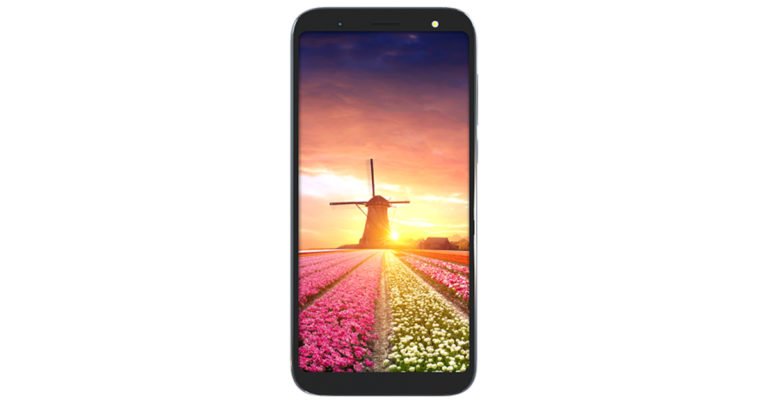



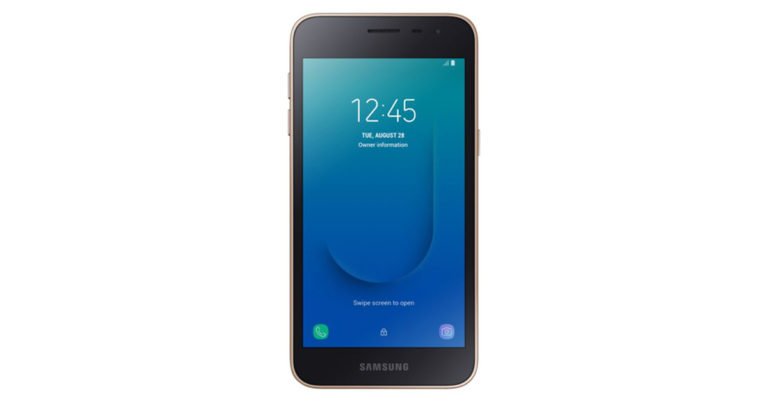

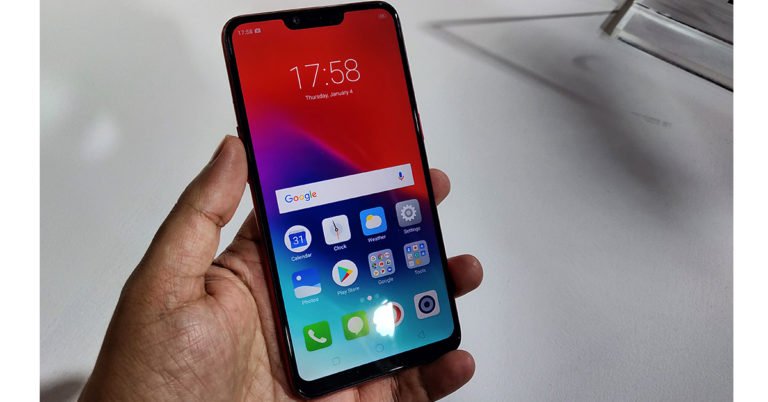
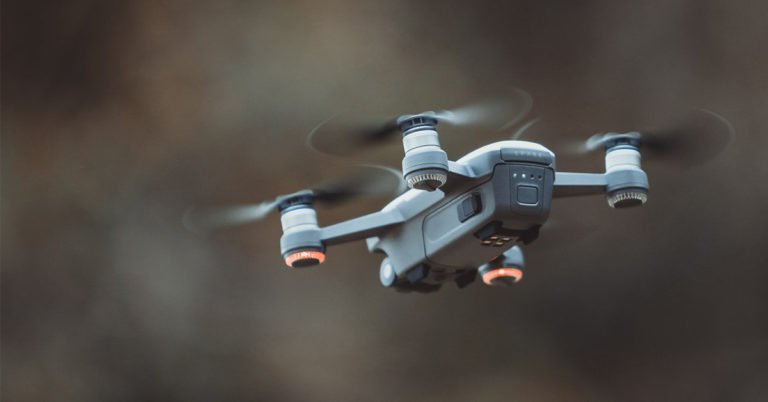
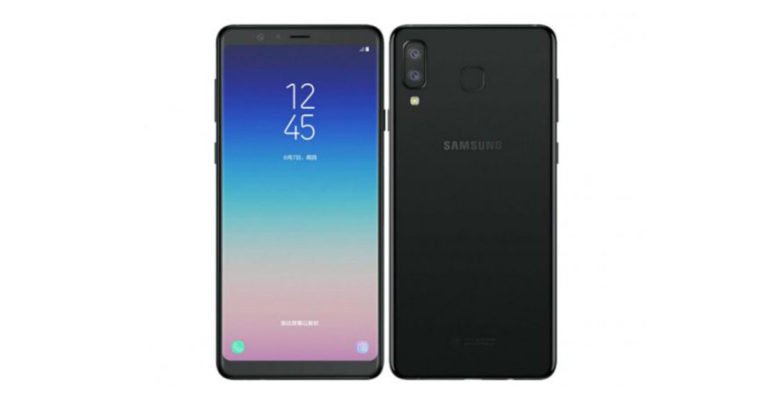
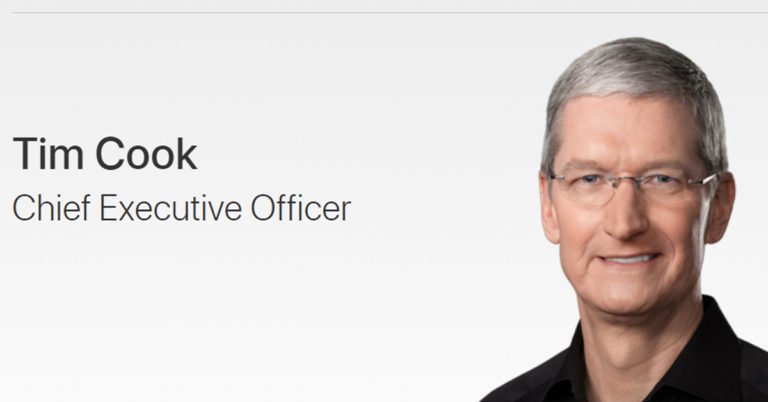
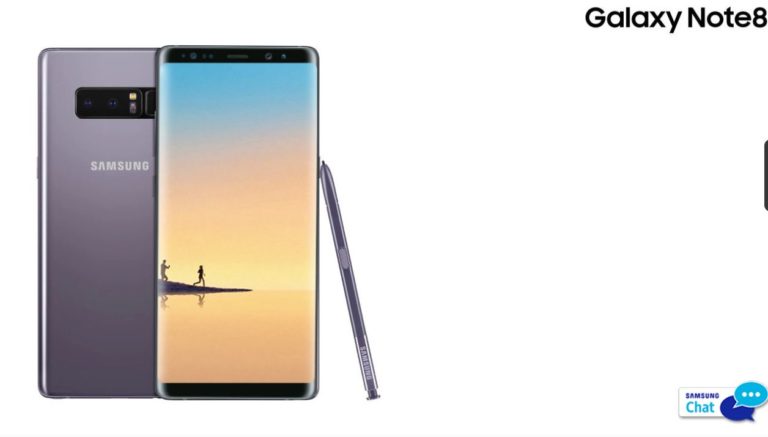
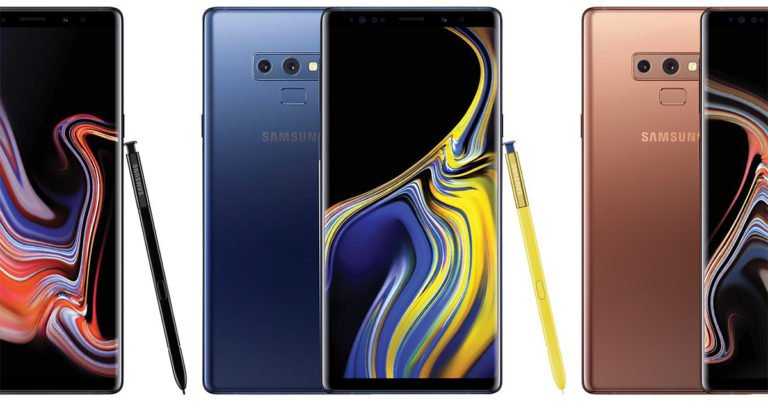
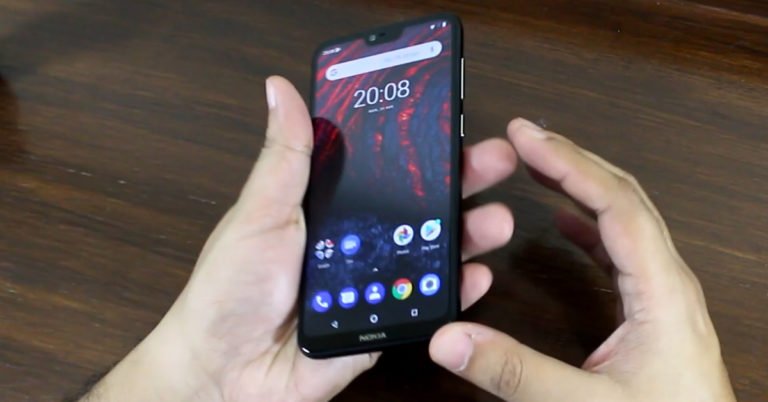
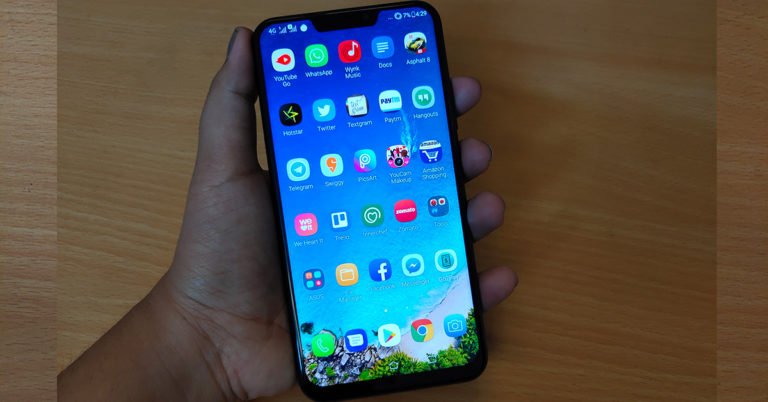
![[Video] Top Upcoming Smartphones Of 2018 [Video] Top Upcoming Smartphones Of 2018](https://www.gadgetbridge.com/wp-content/uploads/2018/08/maxresdefault-3-768x432.jpg)
